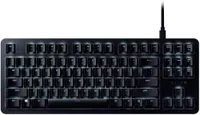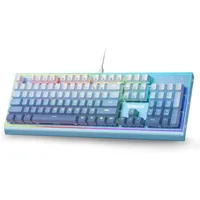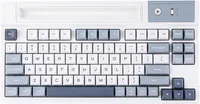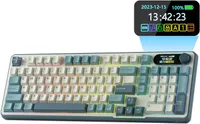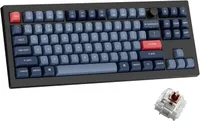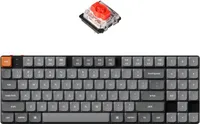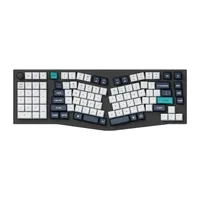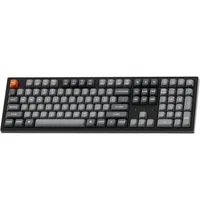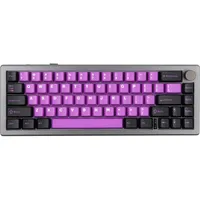The best mechanical keyboards in 2025
The best mechanical keyboards you can buy, based on our testing and reviews
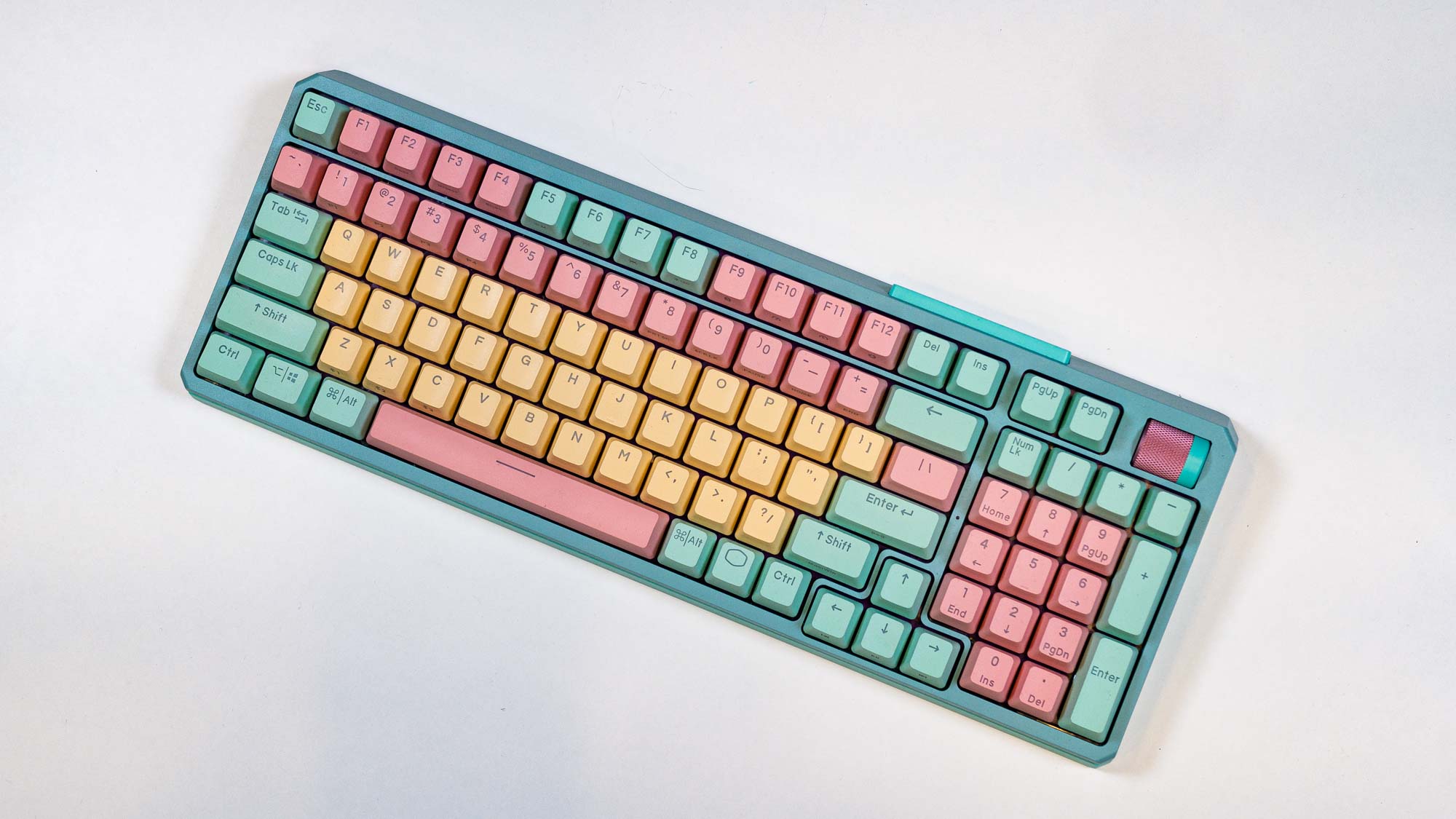
The best mechanical keyboards will elevate your typing experience. With the right keyboard switches, you can type faster, more accurately and more comfortably than a standard membrane keyboard. Some options can be pricey, but if you do a lot of typing, the investment will pay off every time you sit at your desk. It doesn't matter whether it's your latest email, a new short story, or a congratulatory "GG" after your latest Helldivers 2 session.
Buying a mechanical keyboard can also open the door to a whole community of keyboard enthusiasts. If you care to step through that door, you can easily spend hours researching the best switches, keycaps and layouts for your ideal mechanical keyboard. This is why you want a mechanical keyboard: They're generally more customizable and more durable than your average membrane keyboard.
Whether you need a bright, loud gaming keyboard or a subtle, satisfying mechanical keyboard to type on all day without waking the neighbors, you'll find it in the following list, including some of the best gaming keyboards on the market.
The quick list
Here's a quick overview of the best gaming keyboards you can buy right now based on our testing and reviews.
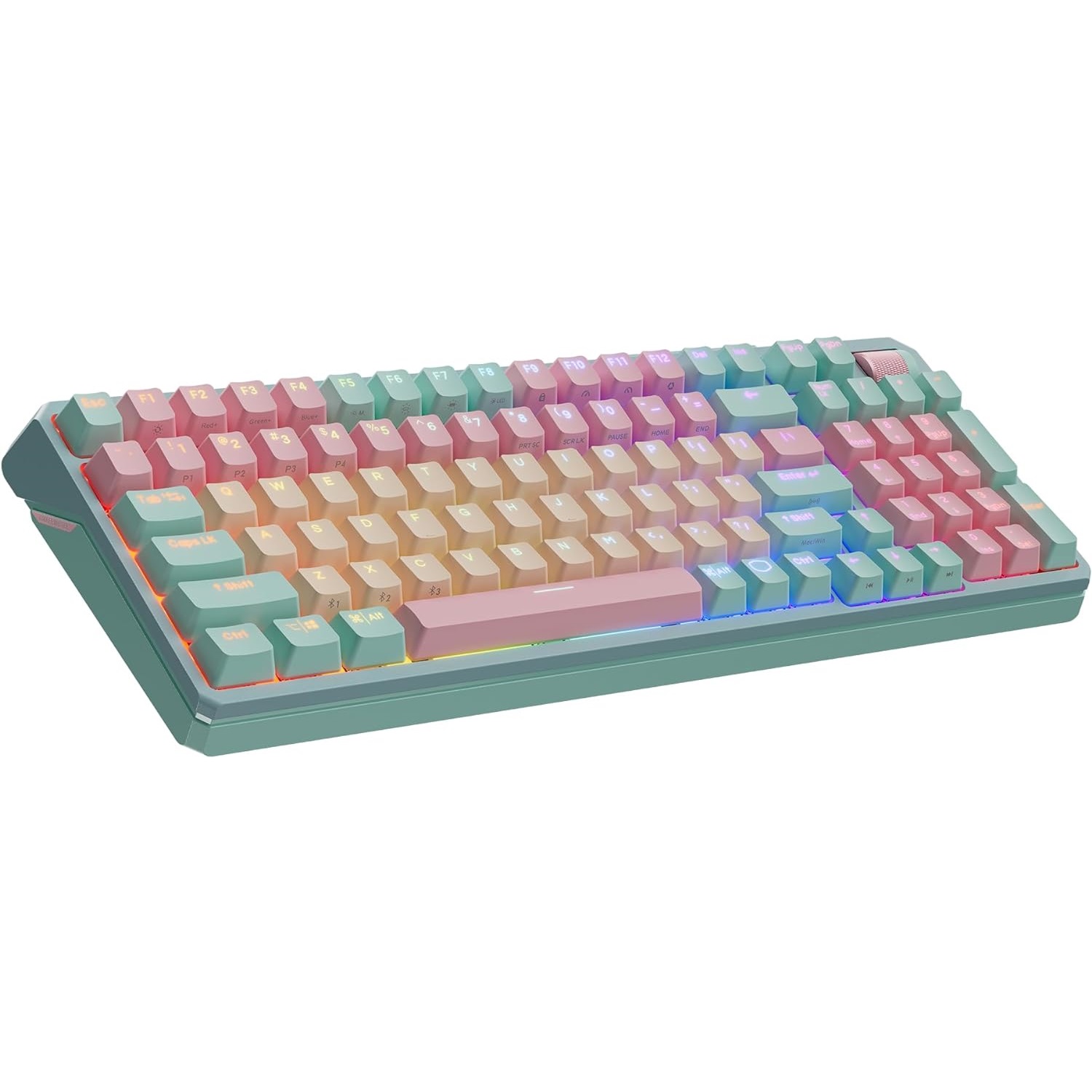
The Cooler Master MK770 is a fantastic keyboard for both typists and gamers. The responsive Kailh Box V2 switches and sturdy gasket-mounted design create a comfortable typing experience. The Macaron color option is also quite nice, as is the hot-swappable design.
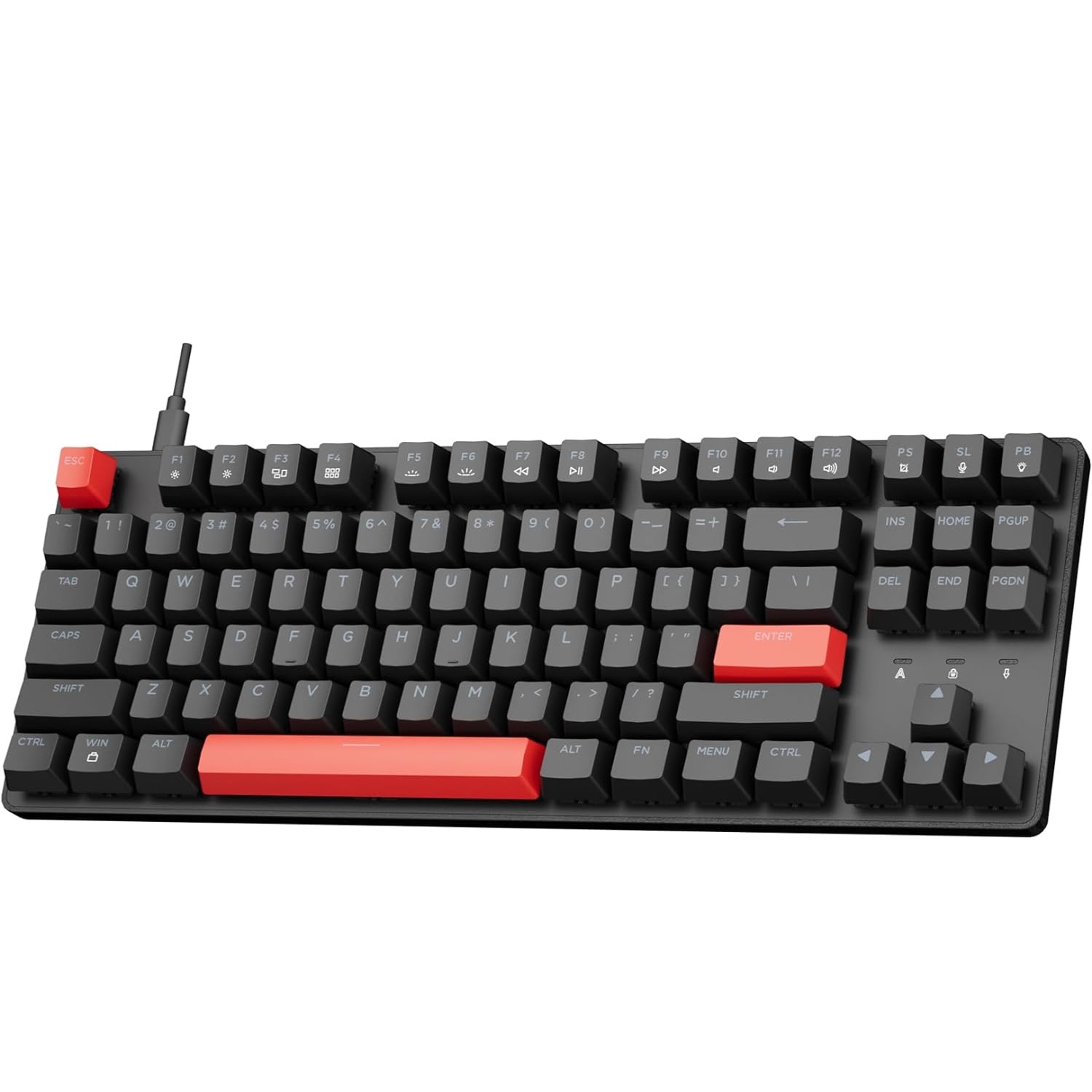
For $36, the Lemokey X1 offers awesome typing and gaming performance. It’s built like a premium keyboard and has customizable backlighting via user-friendly software. However, the premium construction doesn’t extend to the X1’s keycaps, and isn’t hot-swappable.
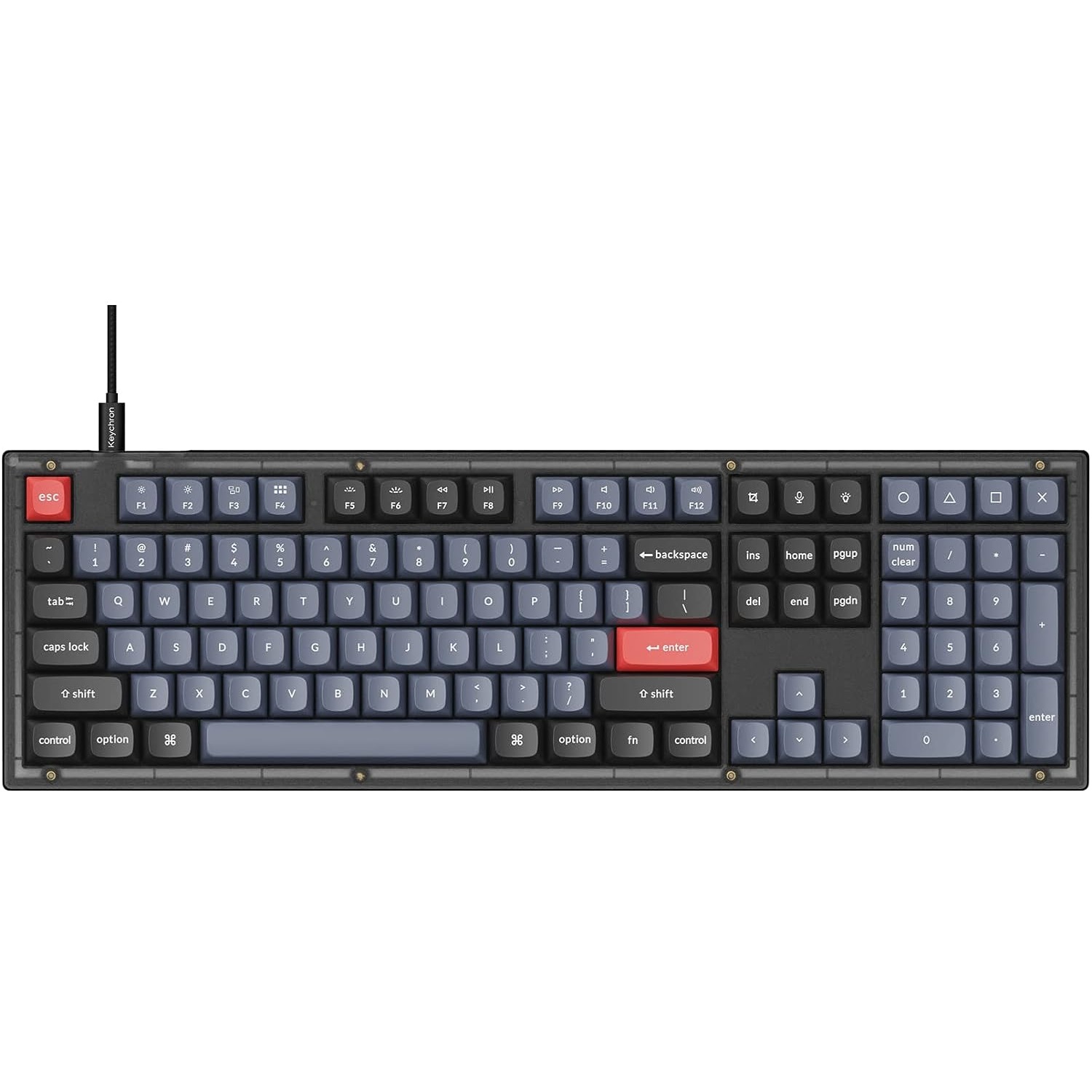
The Keychron V6 features an attractive design, smooth typing, lovely sound and fantastic build quality. It’s fully hot-swappable and available in a variety of guises to suit your needs. Unless you want wireless connectivity, there’s very little reason not to buy one.
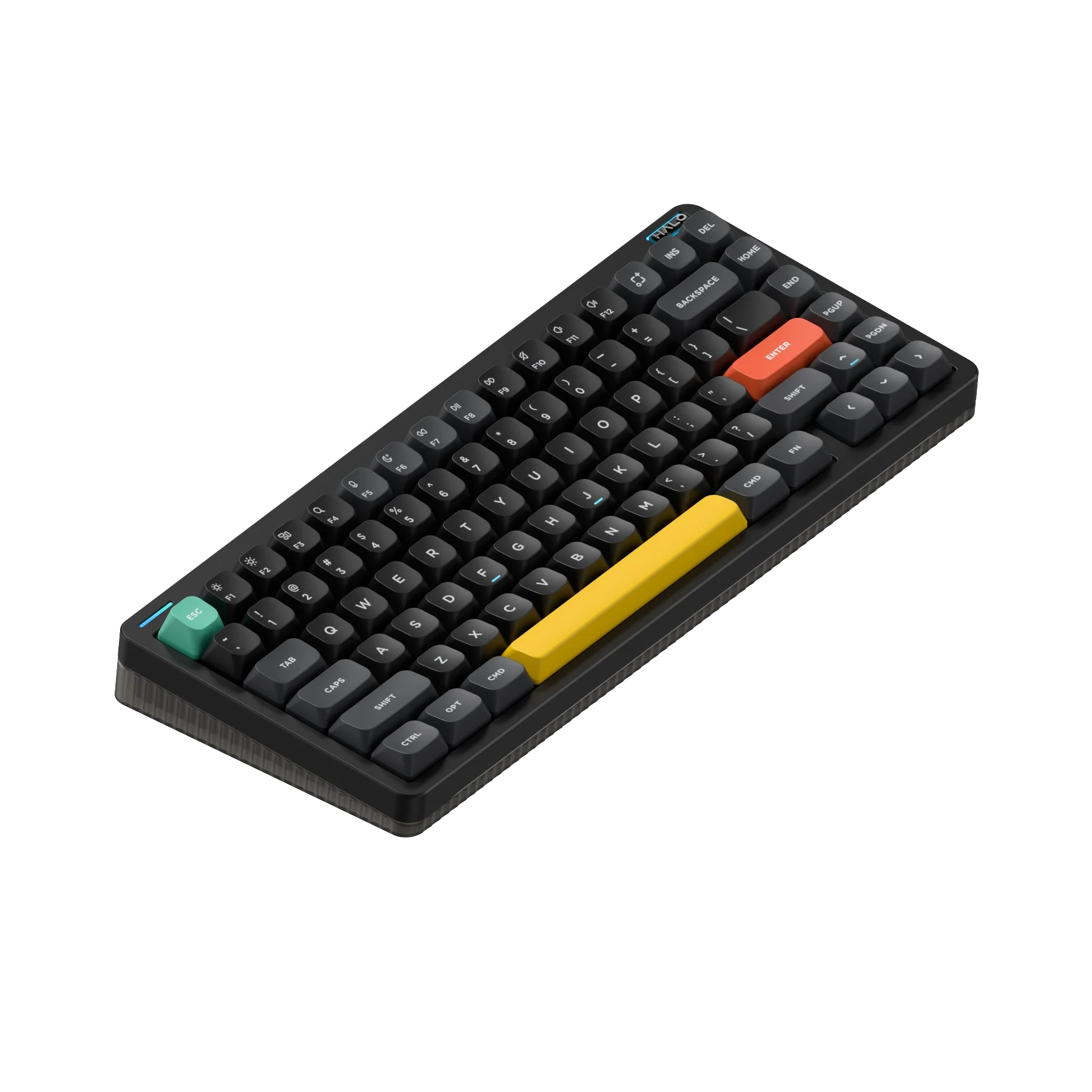
The NuPhy Halo75 V2 is gorgeous to look at, listen to and type on. It polls at 1,000Hz in 2.4G mode, so it'll be fast enough for gaming, too. We have our gripes about it, but all are pretty minor. This is doubtless a worthy successor to the original Halo75.
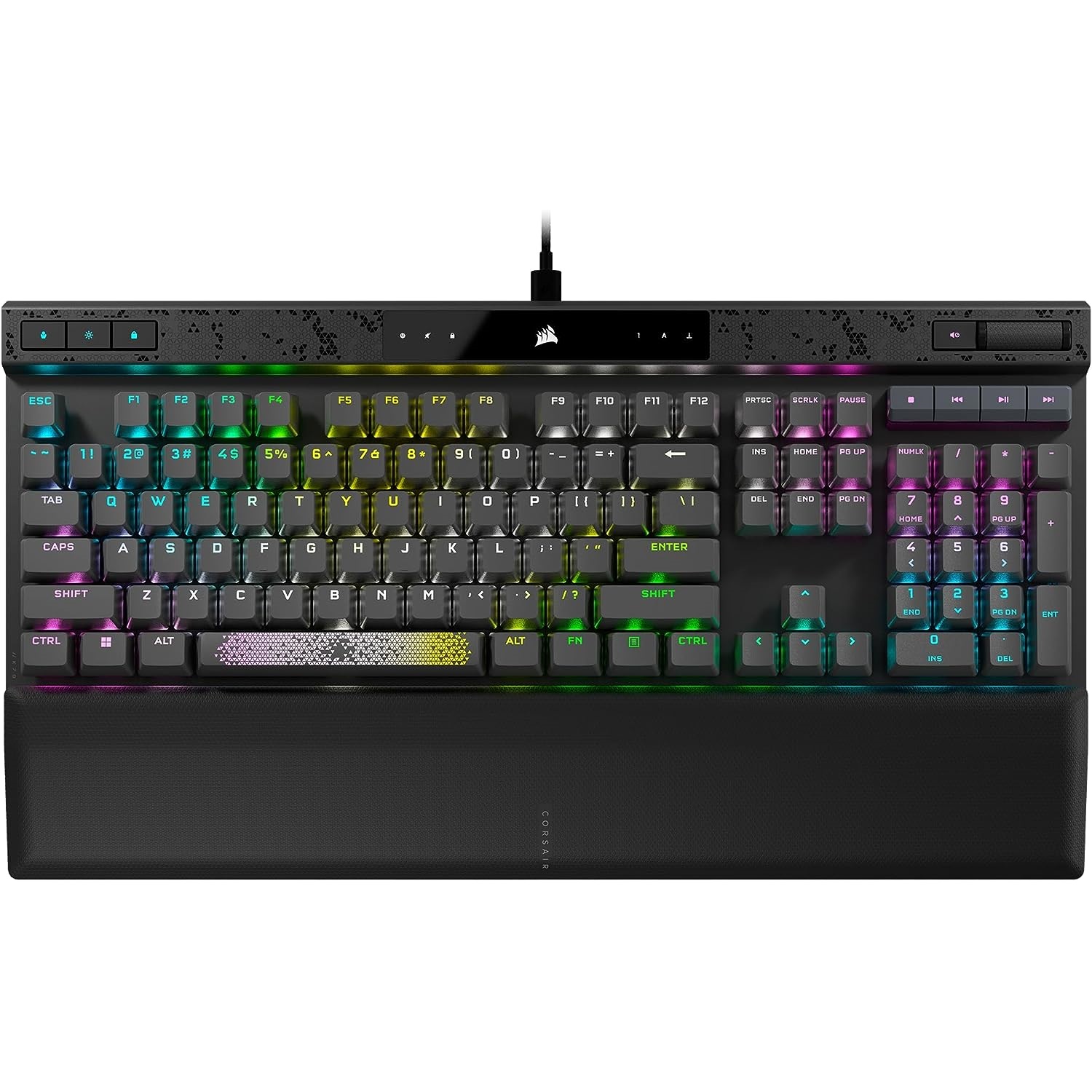
The Corsair K70 Max bears the familiar Corsair keyboard design but its magnetic switches and high level of customization arguably make this the company’s best board yet. If you can ignore its high price, this is the keyboard to get if you’re looking to elevate your PC gaming experience.
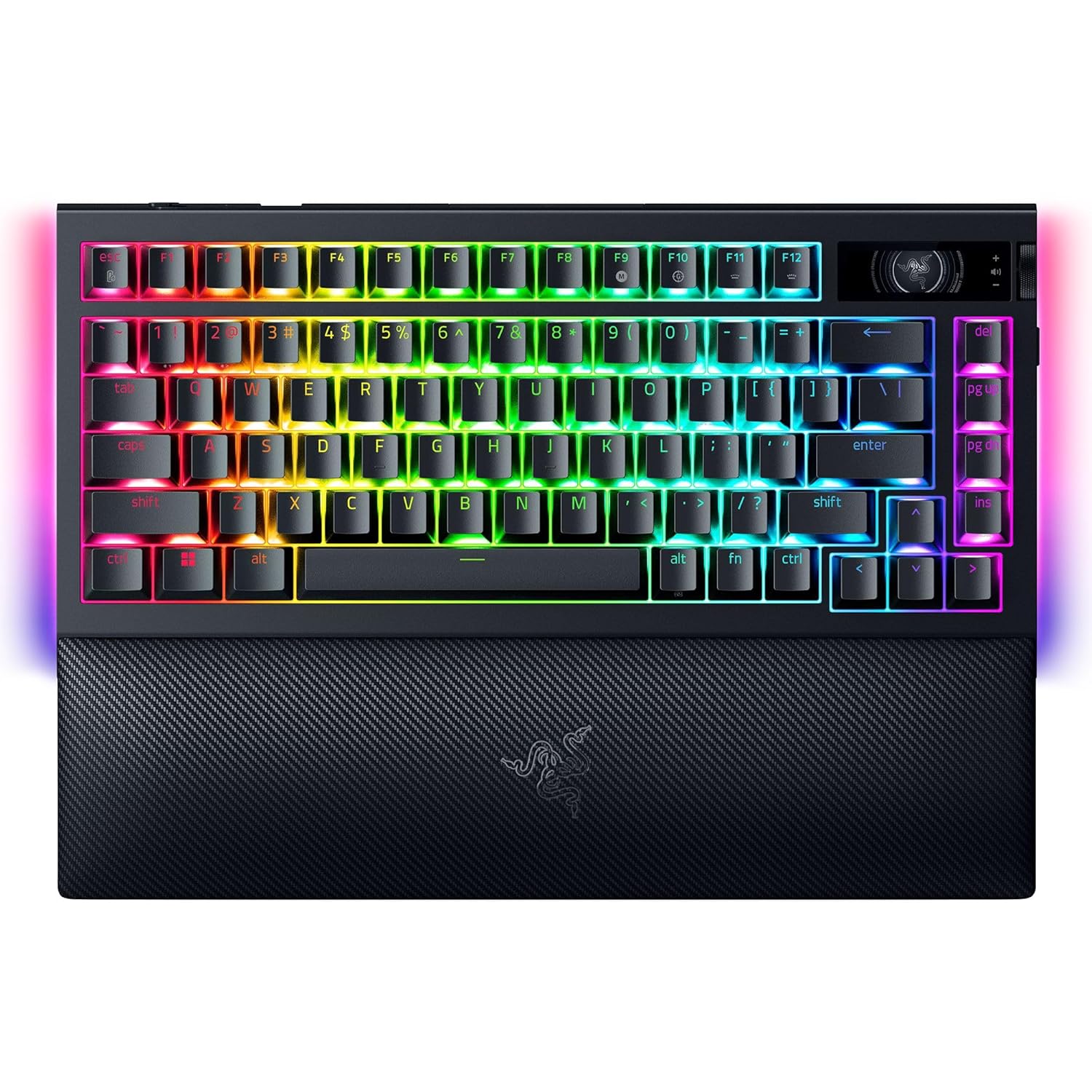
The Razer BlackWidow V4 Pro 75% isn't cheap but we argue it's worth every dollar thanks to its compact size, responsive tactile keys, hot-swappable design and comfortable typing experience. We like the new OLED display and wireless connectivity option.
Load the next 7 products...
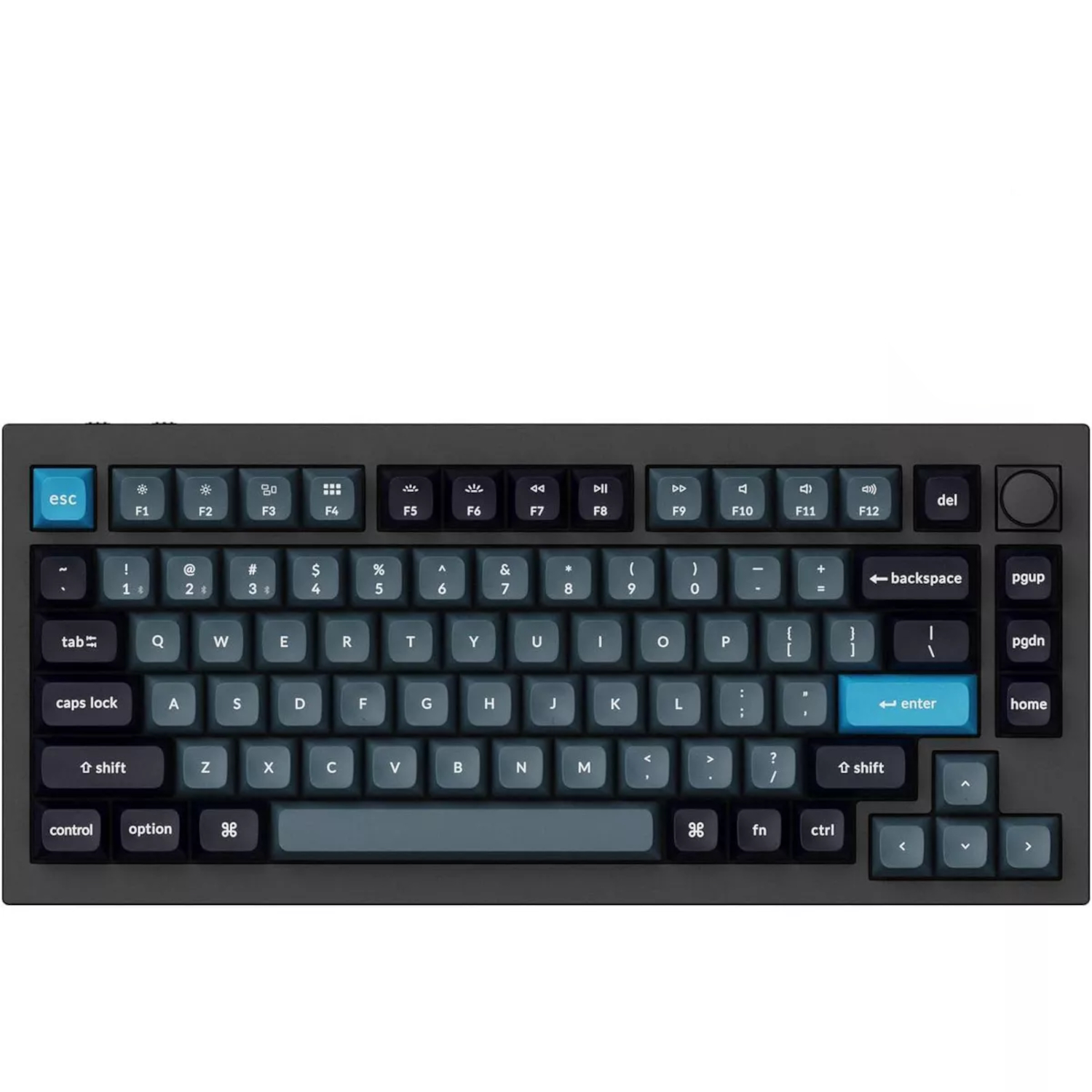
The Keychron Q1 Pro looks gorgeous and feels it too. It sounds decent out of the box but is hot-swappable and runs QMK firmware, opening up lots of customization potential. Like most of Keychron’s metal boards, the Q1 Pro is bulky, so isn’t one to carry around despite its compact 75% layout.
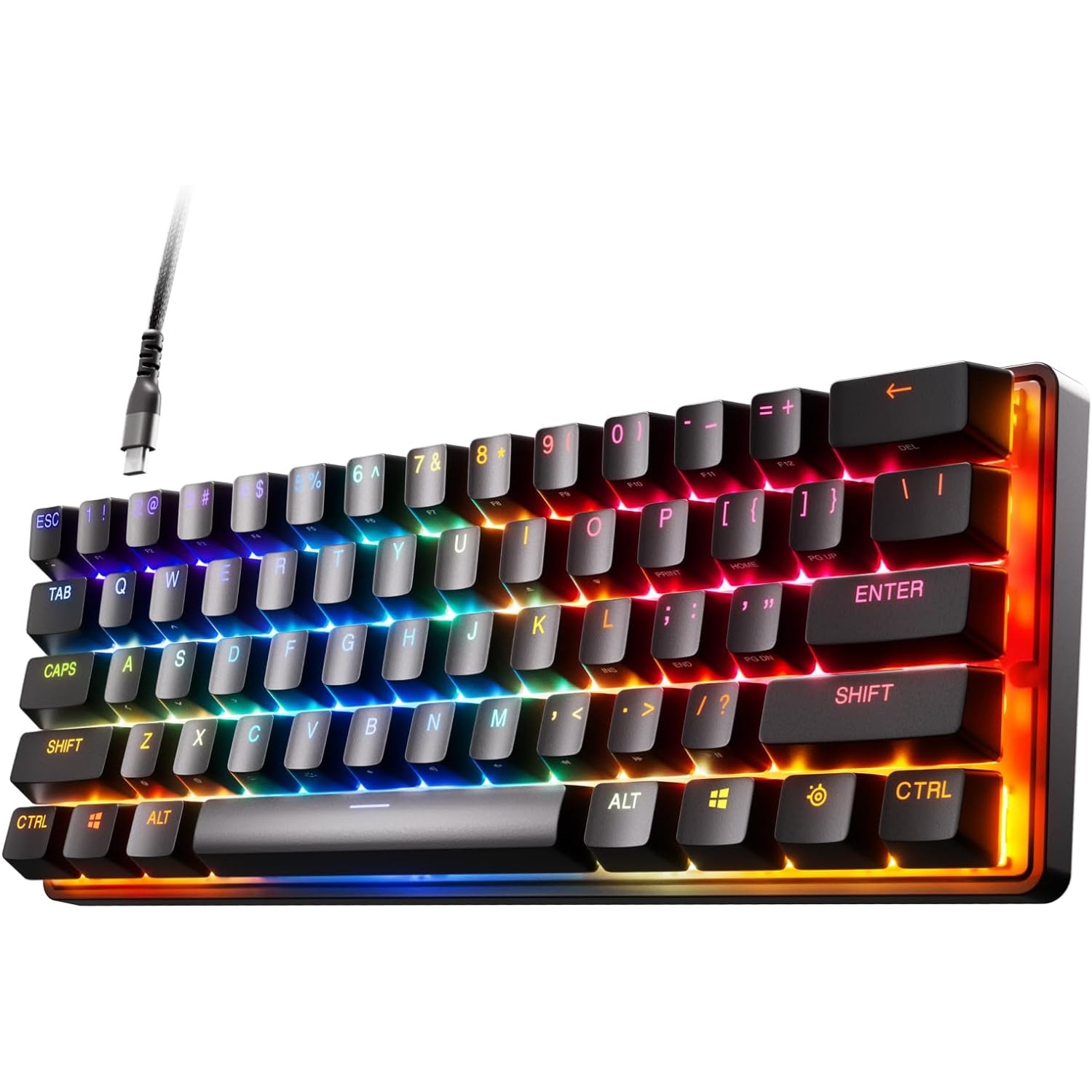
The SteelSeries Apex Pro Mini offers a high-quality build and a versatile range of per-key customization options. Though designed for competitive gamers, it's also an excellent 60% keyboard for typists who want a compact board. However, it comes with a comparatively steep price.
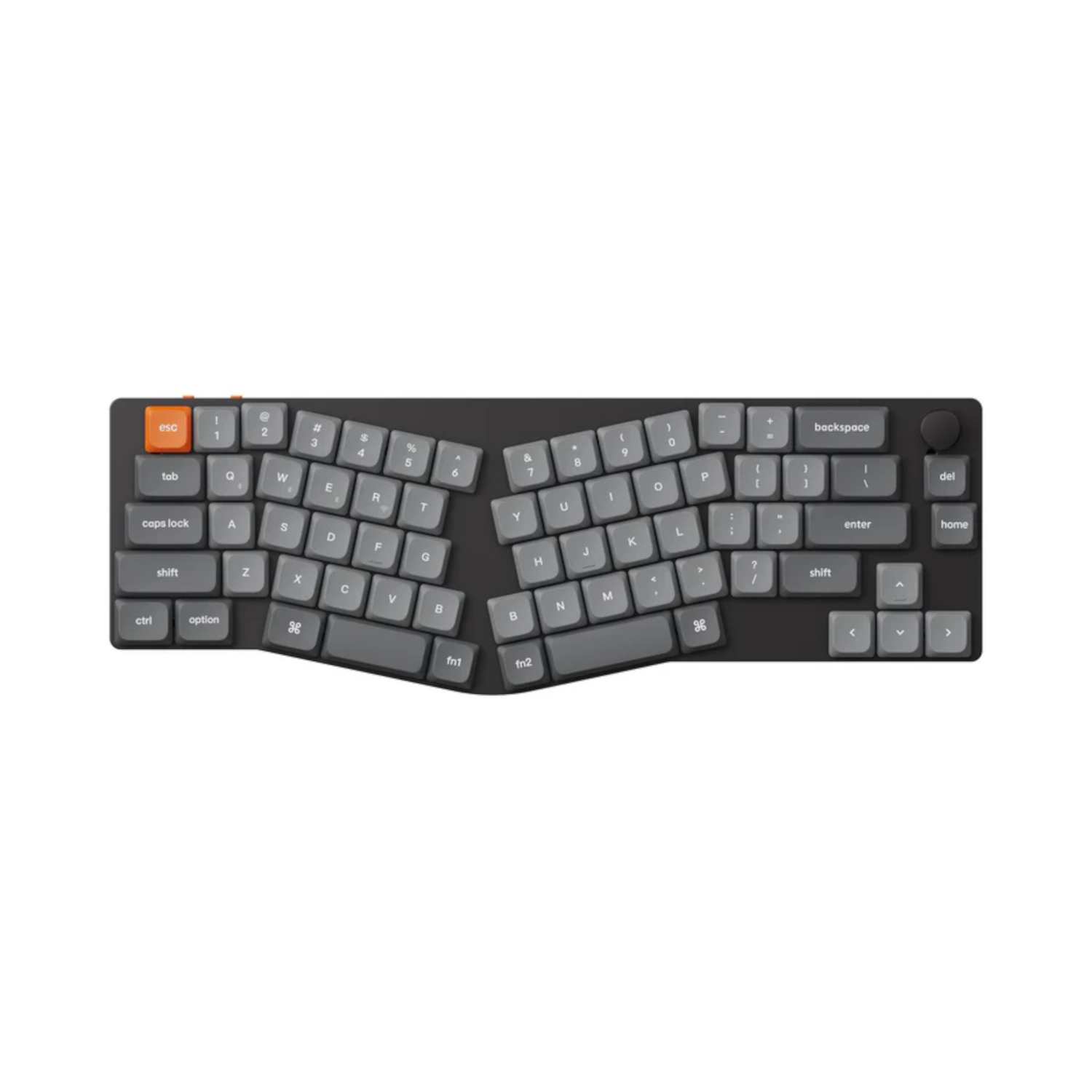
The Keychron K11 Max is a wireless ergonomic keyboard that offers a comfortable typing experience thanks to its Alice layout, plus it’s hot-swappable with a premium construction which makes it a winner. That said, its finicky companion software and loose feet might turn you off.
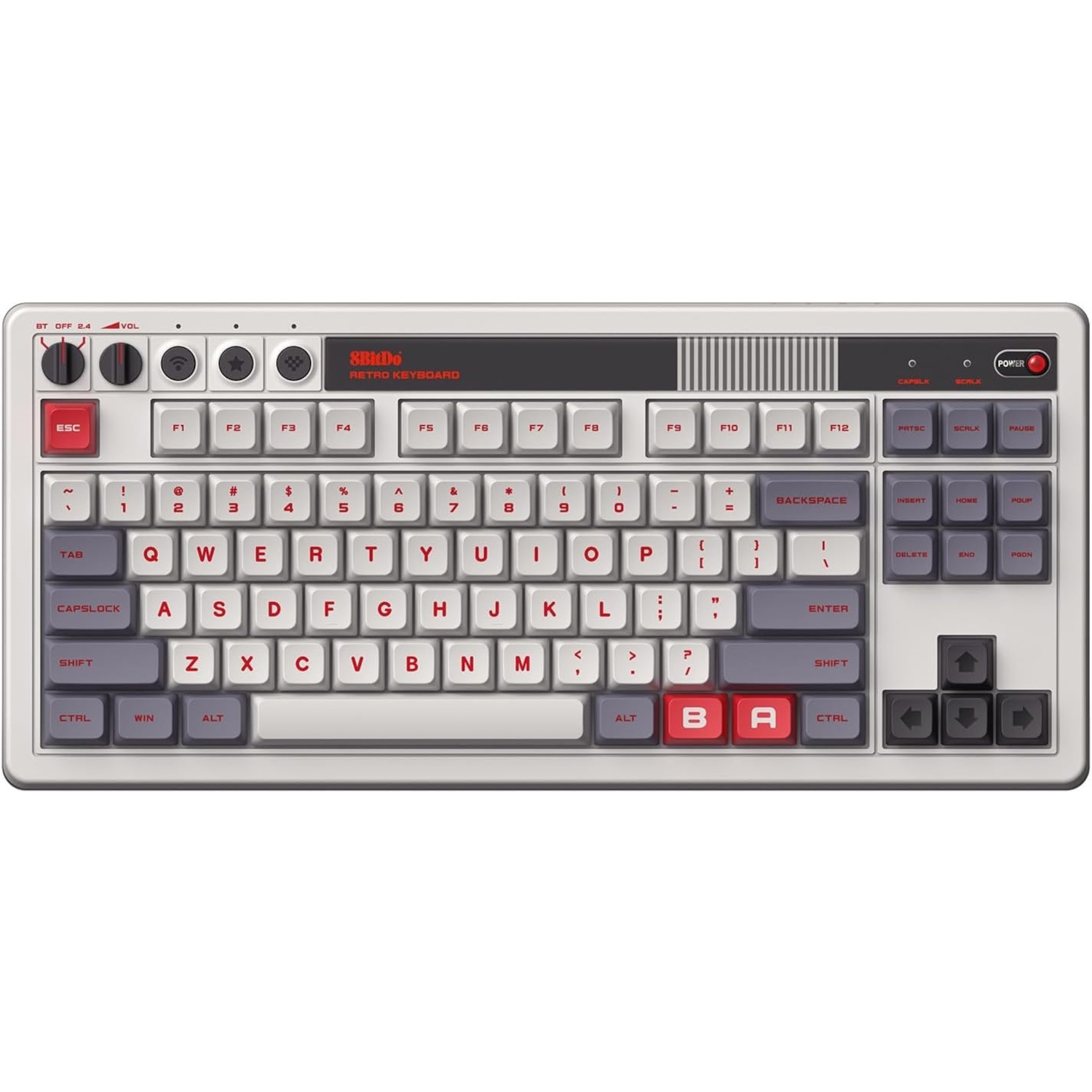
The 8BitDo Retro Mechanical Keyboard sports a retro design inspired by Nintendo. It’s built well and packs Dual Super Buttons to help increase your productivity. It's great to type on and its companion software makes customization easy.
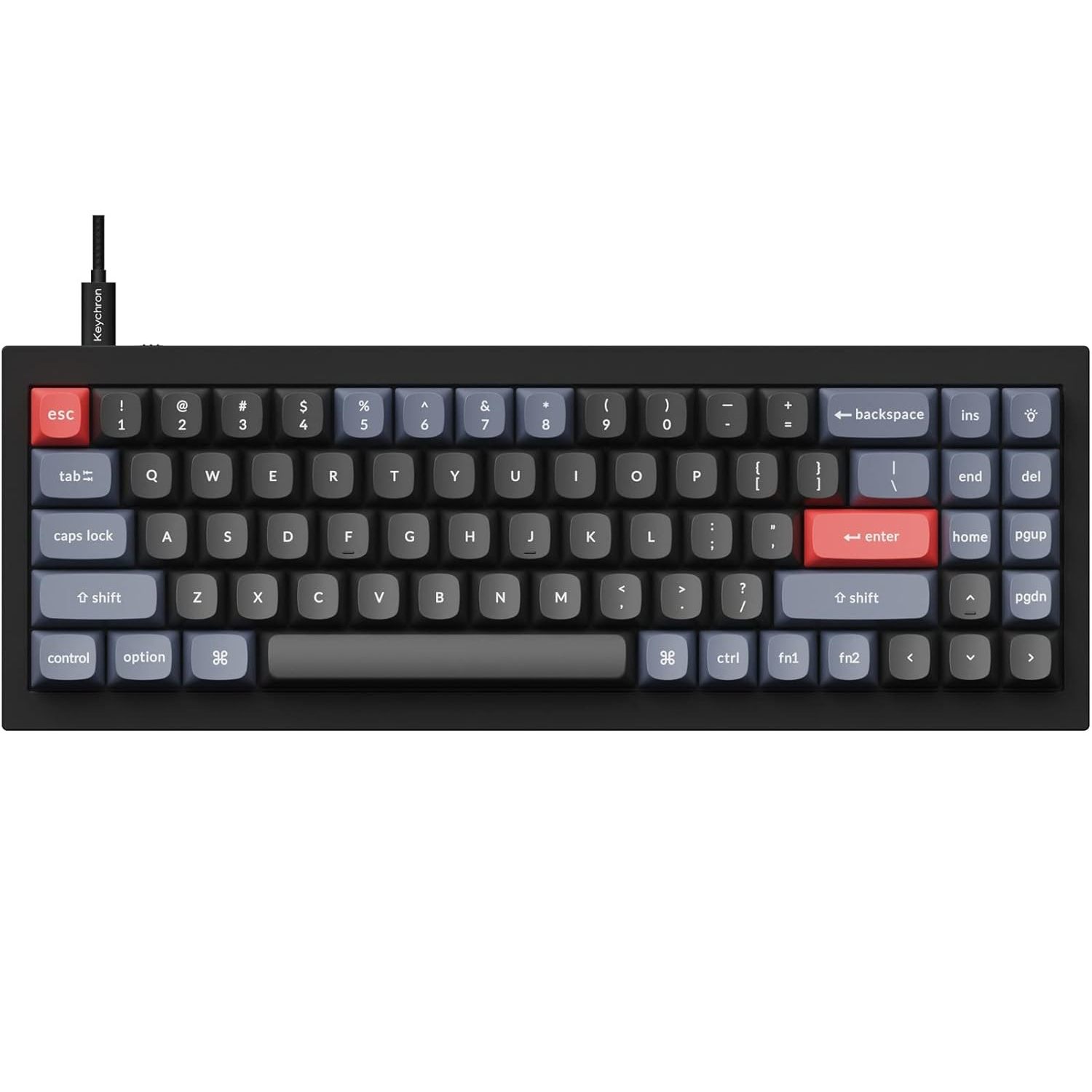
The Keychron Q7 is a wonderful keyboard with an all-metal construction that feels robust and sturdy. While fully hot-swappable, its stock Gateron G Pro switches are highly responsive and lovely to use for gaming and typing. Web-based companion software also makes it easy to personalize the Q7.
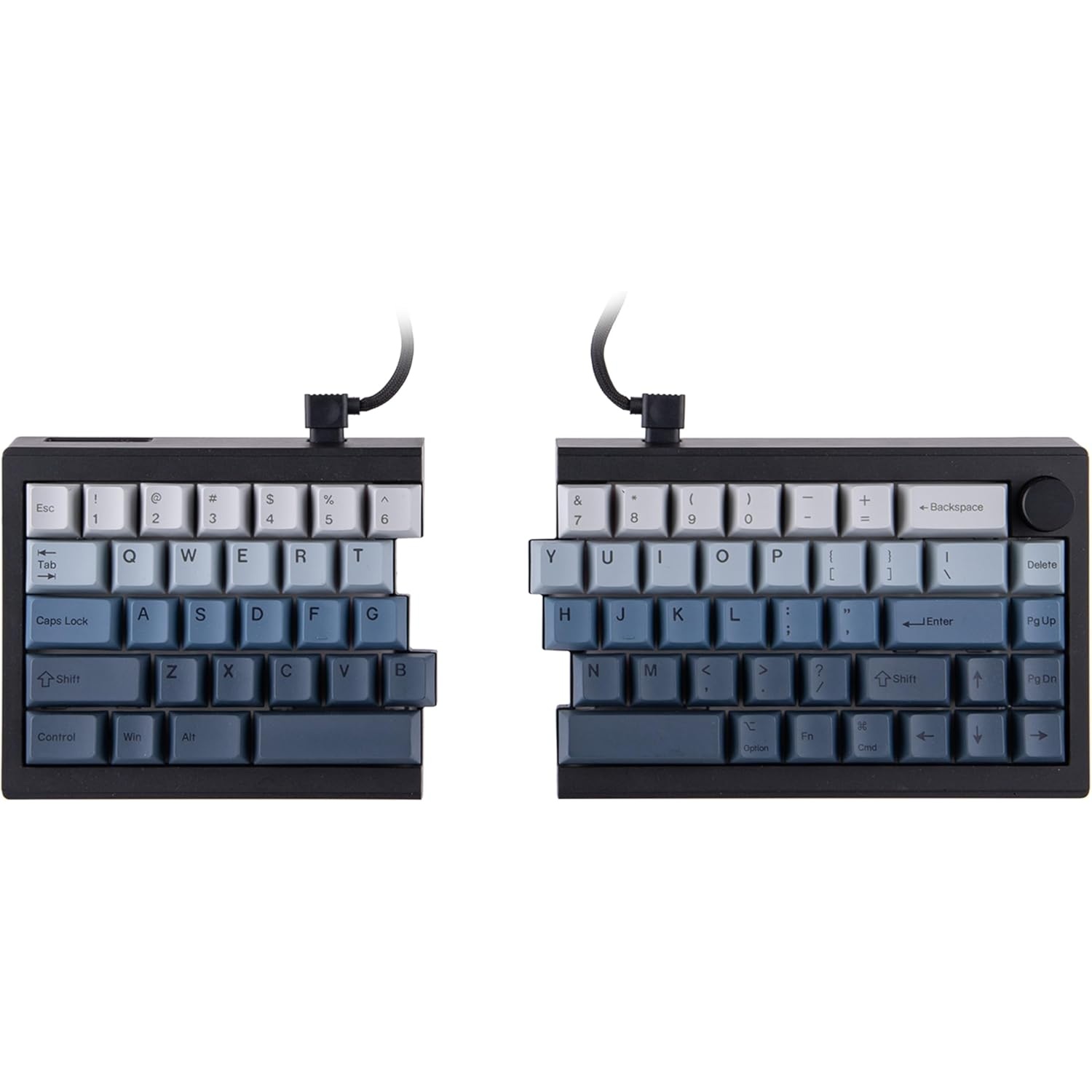
The Epomaker Split65 has a steep learning curve, but it’s a superb ergonomic keyboard for serious typists and casual gamers. Its split design can improve your posture and relieve stress in your arms, it’s QMK/VIA-enabled for easy customization, and it’s fitted with responsive switches. And it isn’t very expensive either.
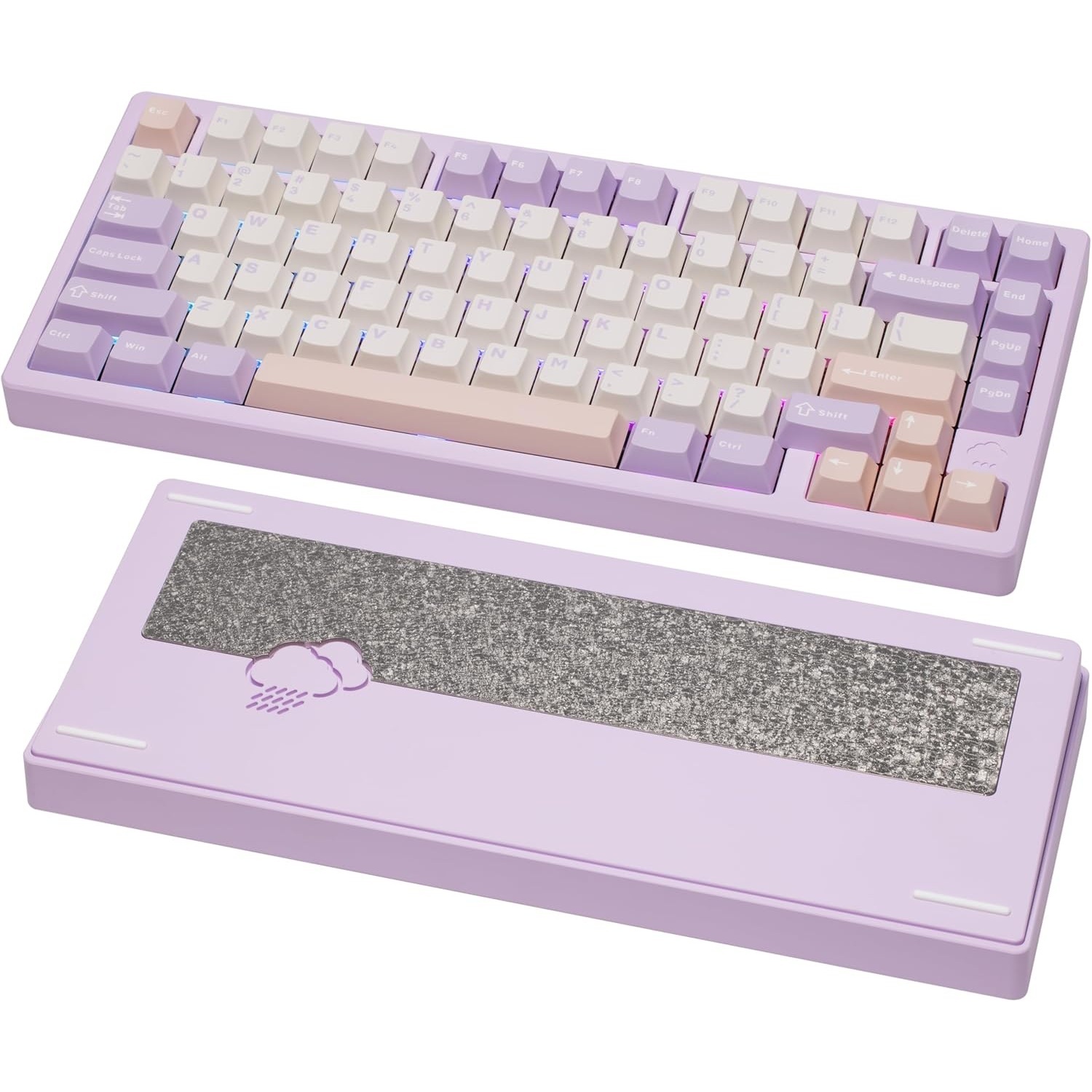
The Wobkey Rainy 75 Pro is one of the best-sounding keyboards. It has a lovely raindrop-like sound profile and a sturdy and lovely build. Its linear switches are smooth and responsive, and the gasket mount offers a comfortable typing experience. Web-based companion software delivers easy customization, and the long battery life impresses.
The best mechanical keyboards you can buy right now
Why you can trust Tom's Guide
The best mechanical keyboard overall
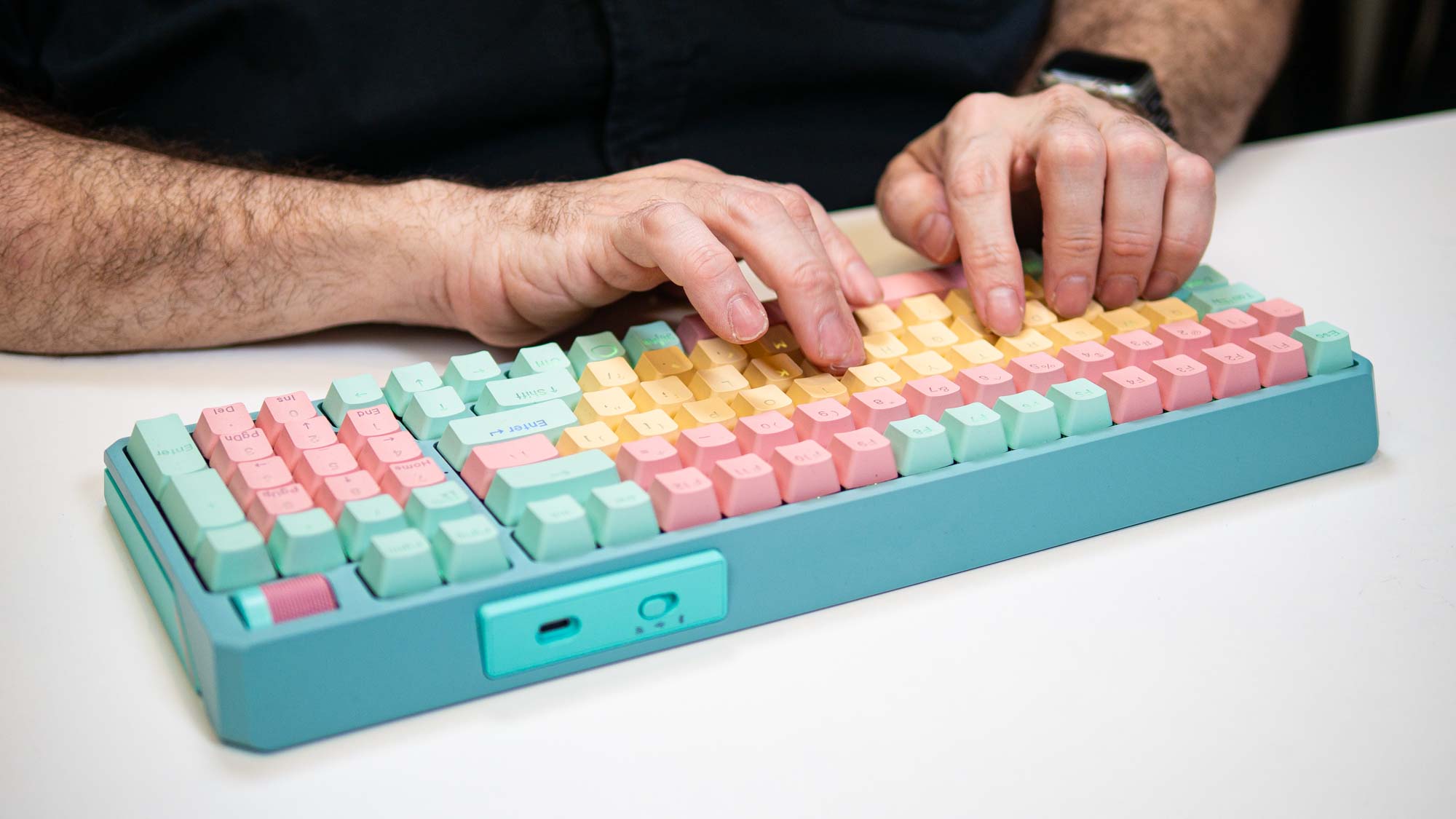
Specifications
Reasons to buy
Reasons to avoid
The Cooler Master MK770 is an all-around excellent keyboard for typists and gamers alike. The gasket-mounted design and KailhKailh Box V2 switches pair wonderfully to create a truly comfortable and pleasant peripheral, especially if you opt for clicky white switches. The Macaron color option also gives this otherwise standard board a stylish flair. And if you want to change the switches or mod the board, the hot-swappable design facilitates that.
Despite issues with the MasterPlus software, the Cooler Master MK770 is a fantastic keyboard, especially at the relatively affordable $119 asking price. That’s more than a typical membrane keyboard, but over $100 less than something like the equally excellent Meletrix Boog75. For what it offers, the Cooler Master MK770 comes with my highest recommendation.
Read our full Cooler Master MK770 review.
The best budget mechanical keyboard
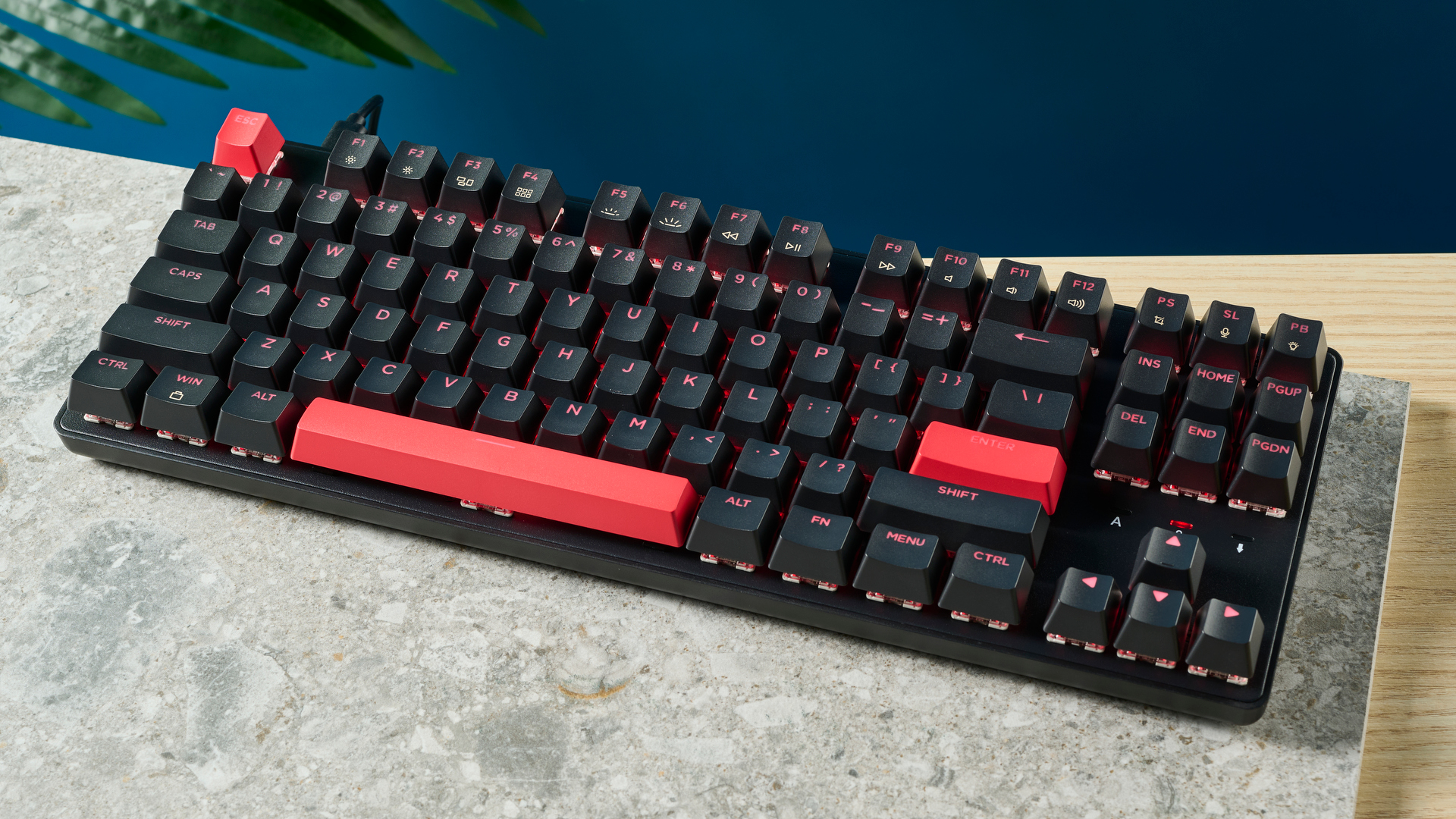
Specifications
Reasons to buy
Reasons to avoid
The Lemokey X1 is a no-brainer if you’re on a budget but crave quality. Priced at just $36, it delivers an awesome performance for both typing and gaming, boasting features typically found in more expensive models. Its body feels premium and robust, and the tactile brown switches we tested offer a delightful typing experience. The keyboard's 1,000Hz polling rate ensures excellent gaming responsiveness, outperforming other budget options like the MageGee Sky87.
The X1 also has red-only backlighting which can be customized via Lemokey Launcher, its intuitive companion software, which can also be used to remap keys, program macros, and more. The keyboard isn’t without its flaws though, as the ABS keycaps feel less than premium and may suffer wear and tear over time. Additionally, it lacks hot-swappable switches which could deter modders. Despite these minor drawbacks, the X1 remains an outstanding choice for anyone seeking a budget-friendly mechanical keyboard with premium features.
Read our full Lemokey X1 review.
The best wired mechanical keyboard

Specifications
Reasons to buy
Reasons to avoid
If you’re after a wired, full-size mechanical keyboard, the Keychron V6 should be your first port of call. It’s built like a tank, using layers of internal insulation that keep the board rigid, as well as dampening the sound for a deep, linear thump.
As standard, it comes with lovely doubleshot PBT keycaps that feel wonderful to type on and will stand the test of time (especially versus ABS keycaps). It has customizable RGB lighting, can be purchased with either red, blue or brown switches, and is fully hot-swappable and easy to disassemble, making it a great platform for modding. You can also buy the V6 in a “bare bones” format, without keycaps or switches — the ideal base for a custom build.
This is a wired board, so if you want a battery-powered keyboard with wireless connectivity, it won’t be for you. As a full-size, well-insulated keyboard, it’s also quite heavy, but the V6 is designed to sit at a desk instead of being taken to work. If you find the standard keycaps a little mundane, Keychron offers a range of different keycap sets in spicier colors to customize the board as you like — with all the money you save over rivals, buying extras won’t be a problem.
Read our full Keychron V6 wired review.
The best wireless mechanical keyboard
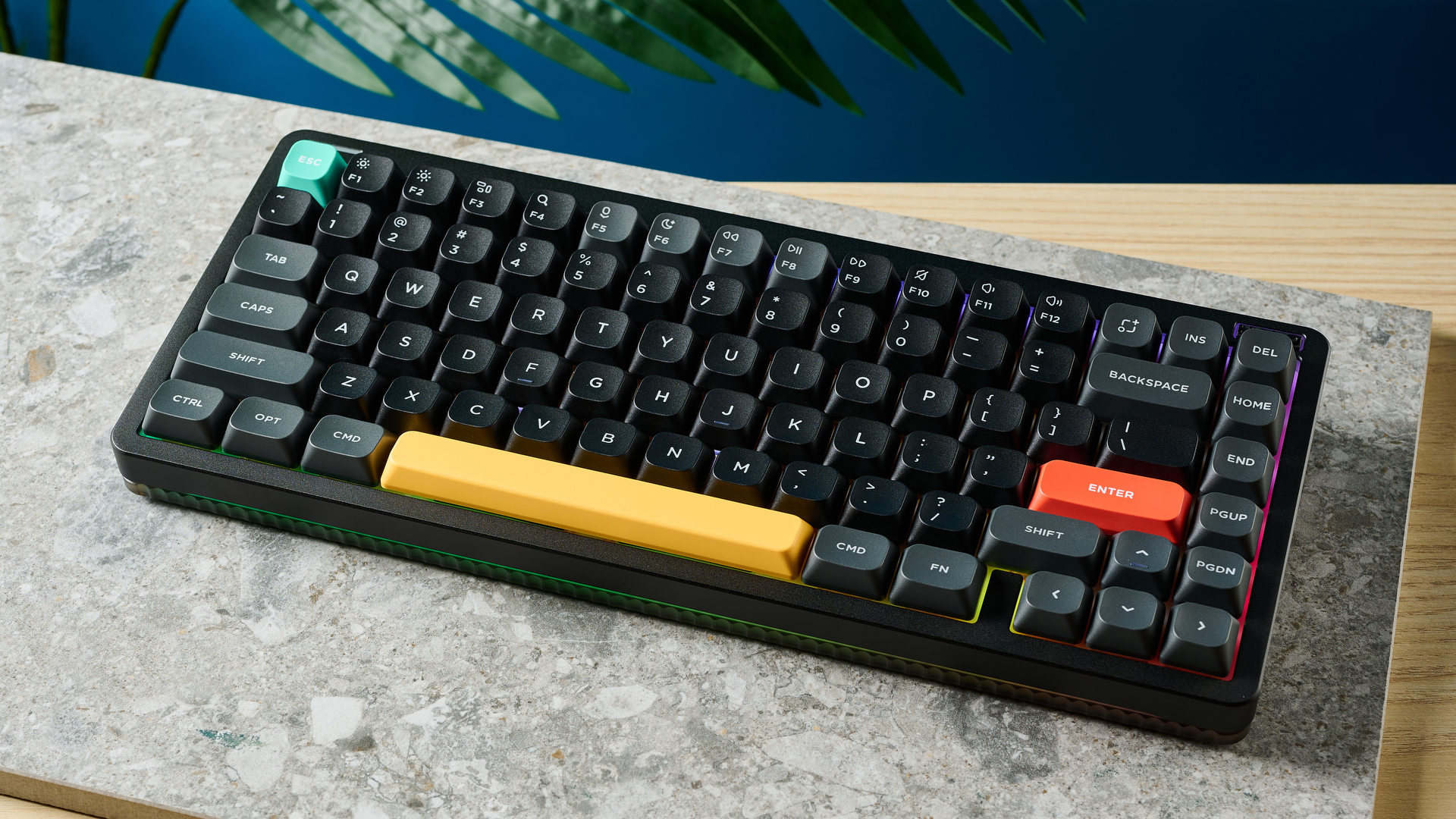
Specifications
Reasons to buy
Reasons to avoid
The NuPhy Halo75 V2 is a 75% custom-style keyboard that looks and sounds gorgeous, and types like a dream. It features six layers of internal padding and dampening, giving the keyboard a resonant sound. This is perfectly complemented by heavy doubleshot PBT keycaps and lovely sounding NuPhy x Gateron switches (Lemon tactile, Raspberry linear or Mint linear), which give the board an elegant thocky sound.
Most impressive though are those keycaps, which NuPhy has redesigned from the original Halo75 to create its mSA profile. These are super comfortable to use and sit somewhere between low- and high-profile keycaps. This results in the typing benefits of low-profile caps, with the styling, sound and feel of high-profile ones. This keyboard is an absolute joy to type on.
Its eponymous halo lighting system looks the part too, casting a soft glowing halo on your desk, and battery life is pretty good given the amount of lighting on the board. It should last you two to three weeks on a single charge.
Read our full NuPhy Halo75 V2 review.
The best gaming mechanical keyboard
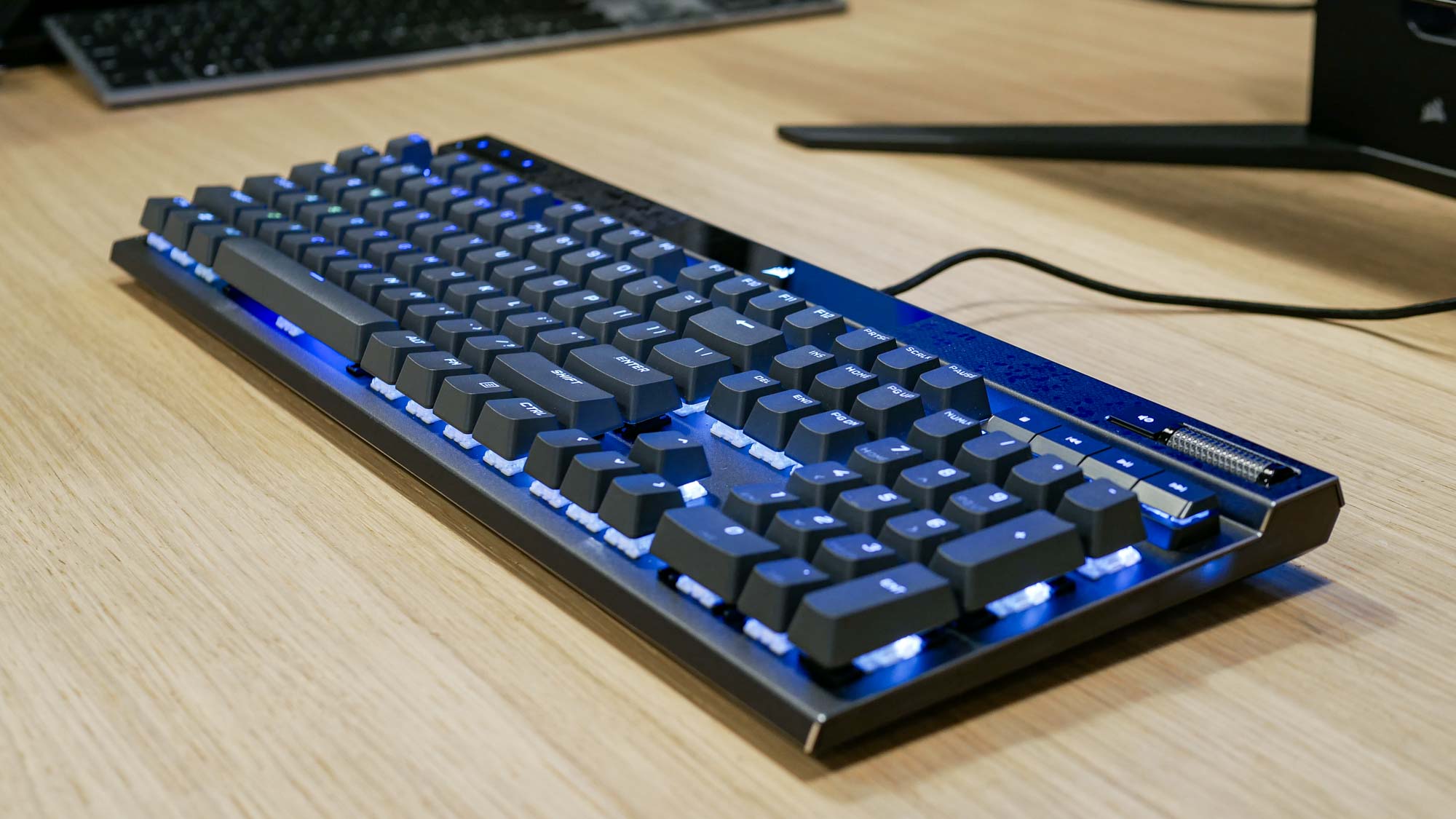
Specifications
Reasons to buy
Reasons to avoid
The Corsair K70 Max is one of the most impressive gaming keyboards out there. The big selling point is its linear magnetic switches, which let you adjust the key's actuation point. Since the keys are magnetic, you're also able to program two functions on the same key. On top of that, it also has sound-dampening technology for quieter keystrokes, a tough aluminum frame and even a comfortable memory foam wrist rest. Overall, it's one of the best mechanical keyboards out there.
The comfortable wrist rest and insane level of customization are also strong bonuses. $230 isn't cheap, but if you're in the market for a gaming keyboard with more features than you might need, the Corsair K70 Max is worth checking out.
Read our full Corsair K70 Max review.
The best hot swappable keyboard

Specifications
Reasons to buy
Reasons to avoid
If you’re after a highly customizable keyboard that sticks to a classic tactile style, aren’t interested in the magnetic switches offered by our favorite Hall Effect gaming keyboards, or want a well-built gaming keyboard that supports switch hot-swapping, look no further than the BlackWidow V4 Pro 75%.
With a hybrid metal and plastic case, including a fancy little OLED screen, the BlackWidow looks very sleek, but with enough personalization so that you can make it your own. I loved customizing the color scheme of the pretty RGB lighting, including a strip on the side of the case, as well as uploading my own custom GIFs to the display using the Synapse companion app.
The customization doesn’t stop with the visuals, though. The BlackWidow V4 Pro 75% is fully hot-swappable, so you can customize the switches to your liking. This is a great keyboard for those who want the advantages of a custom keyboard, without all the fuss.
The standout aspect of the keyboard is its in-game performance, which is great. The keyboard comes with tactile switches, which feel responsive enough to make the most of Razer’s ‘Snap Tap’ feature. Thanks to the keyboard prioritizing the last key held, it’s easier to strafe and movement feels more reactive overall. The tactile switches are fantastic and are a must for those who prefer them over linear switches.
If this all sounds too good to be true, there is just one problem. At $299, this is one of the most expensive keyboards on the market, and there are cheaper keyboards that have slightly more to offer. With all that said, if this keyboard is within your budget, you will certainly not be disappointed by the Razer BlackWidow V4 Pro 75%.
Read our full Razer BlackWidow V4 Pro 75% review.
The best TKL mechanical keyboard

Specifications
Reasons to buy
Reasons to avoid
Proving that you don’t have to compromise when it comes to your keyboard, the Keychron Q1 HE is a full metal, Hall Effect-switch-equipped beast. An upgraded version of the Keychron Q1 Pro and Keychron V1, two of our favorite keyboards, it has all of the features you could ever ask for on a custom deck, and is fully customizable thanks to QMK firmware.
The more you use the Q1 HE, the more you’ll realize how powerful it is. The Hall Effect switches are individually configurable, and you can set the point at which a keypress is registered to be as low as 0.2mm — if this sounds like a big deal for gaming, it is. You will notice a massive improvement across games that require quick response times. If that's not enough, the keyboard offers quad actuation points (as opposed to only dual points on gaming boards like the Corsair K70 Max and SteelSeries Apex Pro), and also supports Rapid Trigger, allowing for multiple keypresses to be registered without fully releasing the key — the latter is game-changing for games that require quick keystrokes in succession.
The only drawback is the price — for $80 cheaper, you can get your hands on our favorite gaming keyboard, the Keychron K2 HE. These are very similar boards, both equipped with the same features but in slightly different layouts and with different case materials. If the metal case of the Q1 HE isn’t a big draw for you then it's hard not to recommend the K2 HE instead. With that being said, fans of the full metal design can grab the Q1 HE for not much more than your average metal Keychron keyboard, at just over $200.
Read our full Keychron Q1 Pro review.
The best mini mechanical keyboard
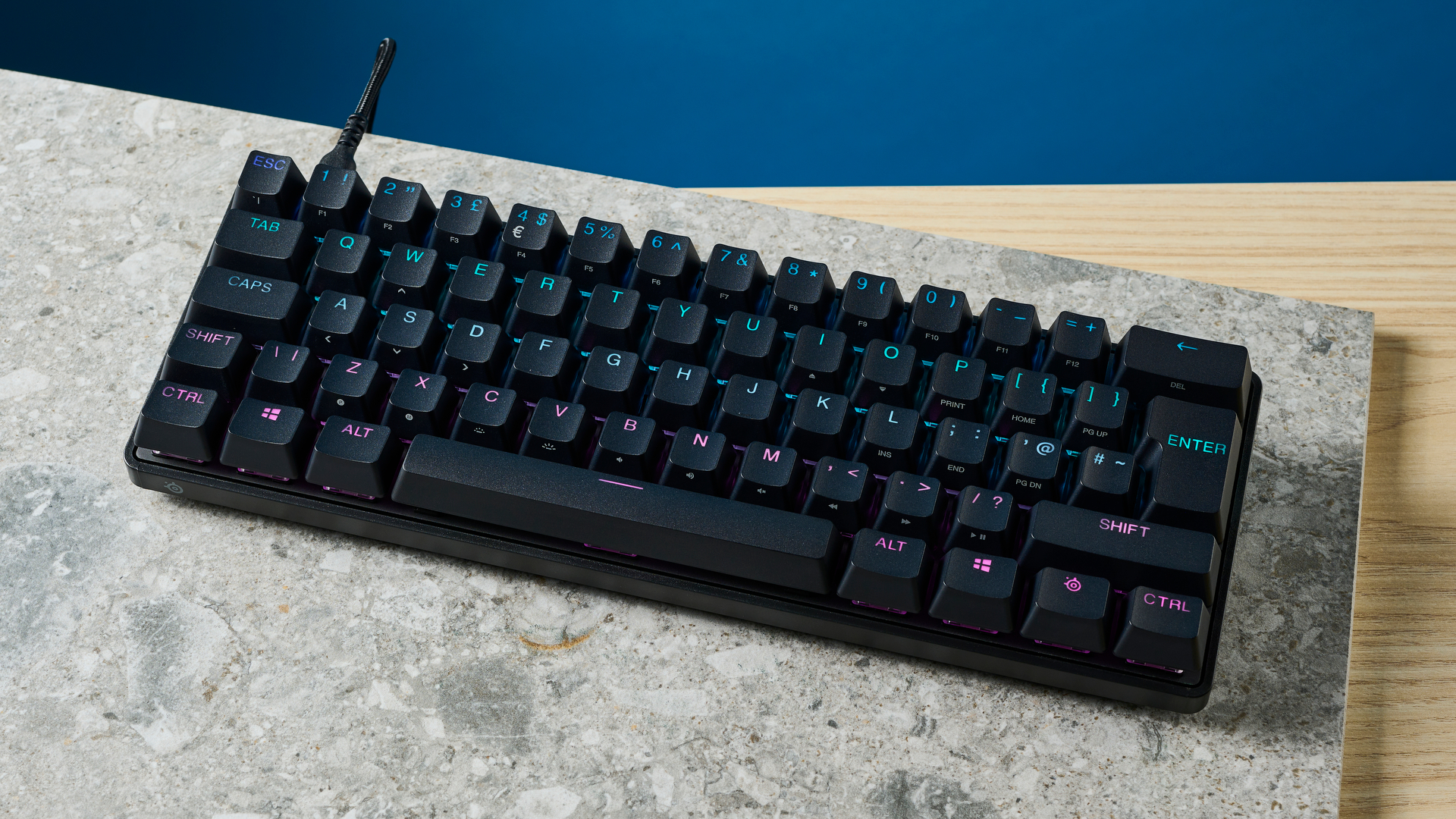
Specifications
Reasons to buy
Reasons to avoid
What the SteelSeries Apex Pro Mini lacks in number of keys, it makes up for with its brilliantly responsive Hall Effect switches. This 60% gaming keyboard offers a plethora of great features thanks to its OmniPoint switches, such as useful dual actuation points and adjustable distance, on top of a fantastic build quality and sleek appearance. The Apex Pro Mini offers a more affordable pathway into Hall Effect switches, while saving on desk space compared to the full-sized Apex Pro.
You will need to look past some issues— there are minor brightness issues with the RGB lighting and the Hall Effect switches are not ideal for long-form typing. The Apex Pro Mini does not offer the smoothest experience for productivity, but makes an effort to account for this with handy shortcuts to the most used keys. Offering powerful per-key customisation in a small package, the Apex Pro Mini is an excellent mini keyboard for gaming.
Read our full SteelSeries Apex Pro review.
The best ergonomic mechanical keyboard
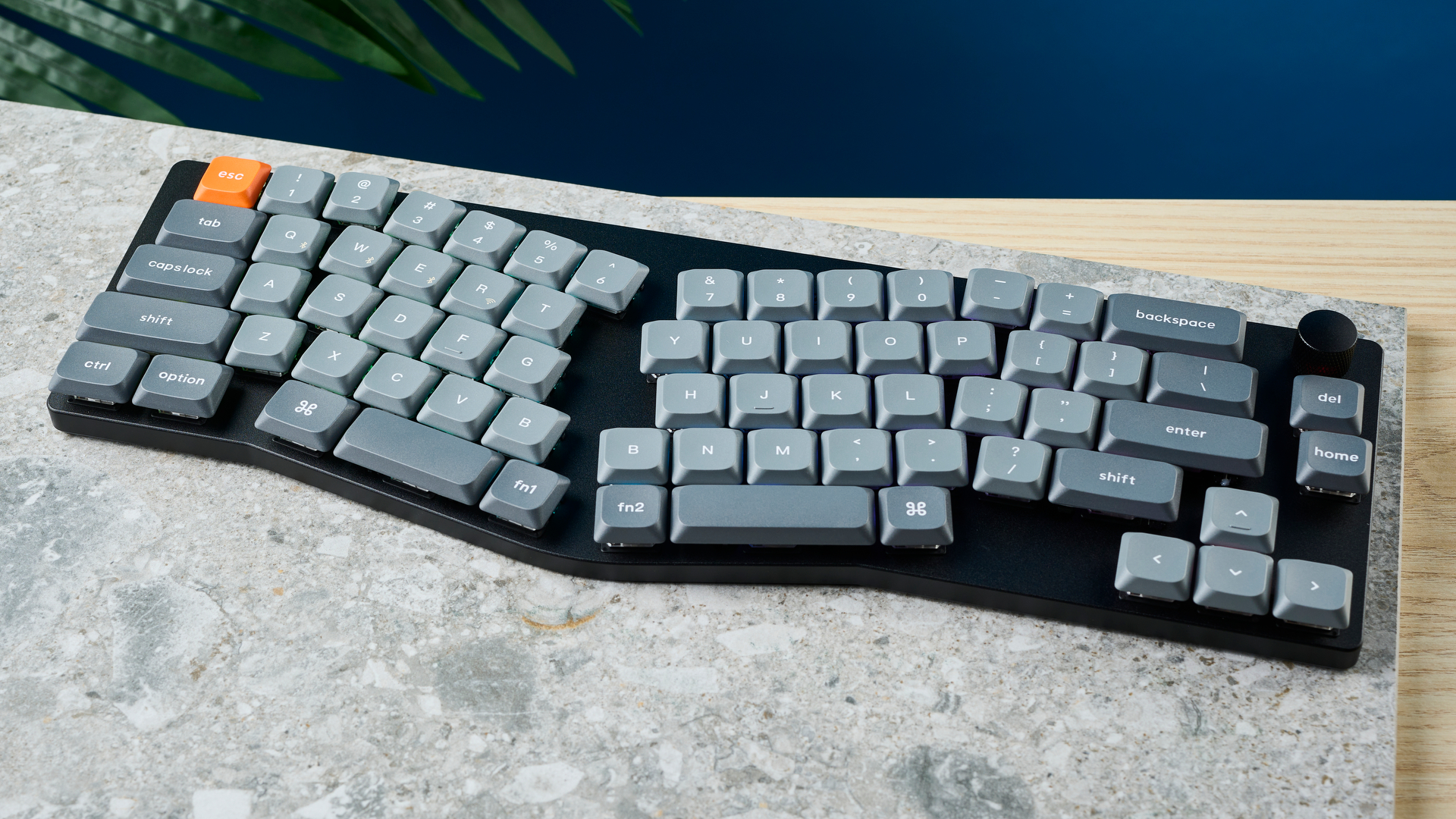
Specifications
Reasons to buy
Reasons to avoid
low-profileThe Keychron K11 Max is an excellent wireless keyboard for all your ergonomic needs. It’s got a 65% Alice layout which means it’s split and slightly tilted to relieve strain on your wrists. If you aren’t used to a keyboard like this, getting to grips with it might feel like an uphill walk, but it’s worth it. The K11 Max offers a great typing experience and its low profile keycaps and switches are very comfortable to type on. It’s built really well too, with an aluminum frame plus double-shot oil-resistant PBT keycaps which won’t fade over time.
But the K11 Max’s companion software feels finicky as you can’t use it to change the hue and brightness of the RGB lighting, nor can you remap the metallic knob. Furthermore, while its body is built well, the feet are slightly loose making the board easy to knock and move. There’s also no onboard dongle storage, so keep a close eye on that small 2.4GHz adapter.
If you’re willing to overlook these flaws, the K11 Max is a great keyboard that excels at providing its users with a comfortable typing experience.
Read our full Keychron K11 Max review.
The best designed mechanical keyboard
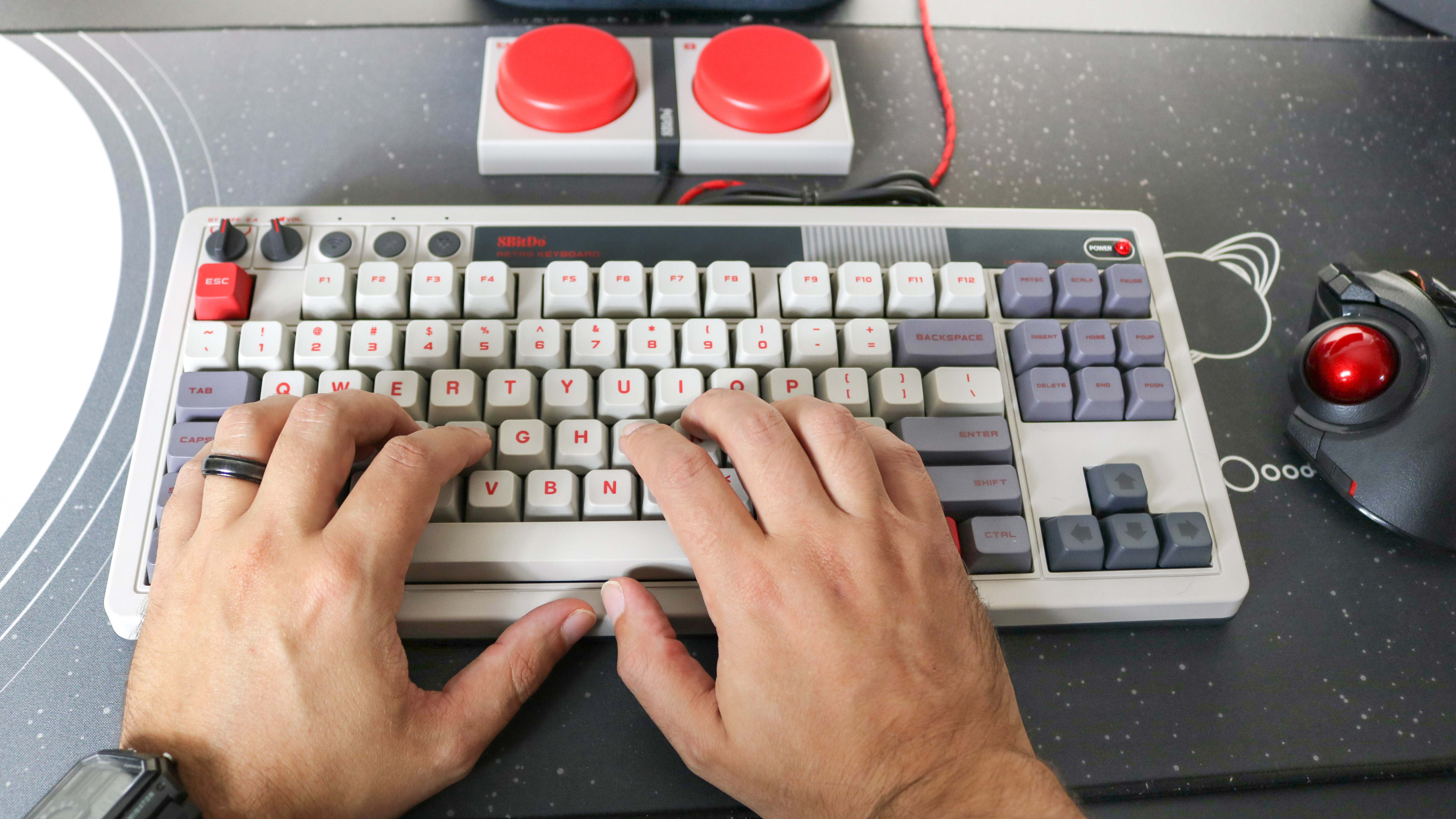
Specifications
Reasons to buy
Reasons to avoid
The 8BitDo Retro Mechanical Keyboard uses a similar color scheme to Nintendo's NES and Famicom systems, which should make retro gamers positively nostalgic.
The NES model we reviewed looks gorgeous thanks to features like its dye-sub PBT keycaps that look like they belong in a Nintendo game, as do the programmable A and B keys on the bottom row. The black, red and off-white color also gives this keyboard that distinctive classic appearance.
We also like the knobs and buttons which are also on the 8BitDo Arcade Stick for Xbox. The knob on the left lets you switch between connection modes (Bluetooth, wired or 2.4 GHz) while the one on the right lets you adjust your computer’s volume. Next to these is a pairing button, a button for quickly remapping those programmable A and B keys and a button to switch between profiles.
The Dual Super Buttons are another unique aspect of this keyboard. Like Microsoft’s Xbox Adaptive Controller, they use a 3.5mm audio jack to connect to the back of the keyboard. There are four of these ports on the back of the keyboard, which lets you have up to eight, large programmable buttons to complement your workflow. However, they do take up room on your desk and might not be all that useful.
The 8BitDo Retro Mechanical Keyboard is a fun keyboard that's ideal for those who want the perfect mix of nostalgia and modernity. Though its Dual Super buttons aren't all that practical, they help this board stand out. For a sub-$100 that looks this cool, you're getting an overall great device.
Read our full 8BitDo Retro Mechanical Keyboard review.
The best metal mechanical keyboard
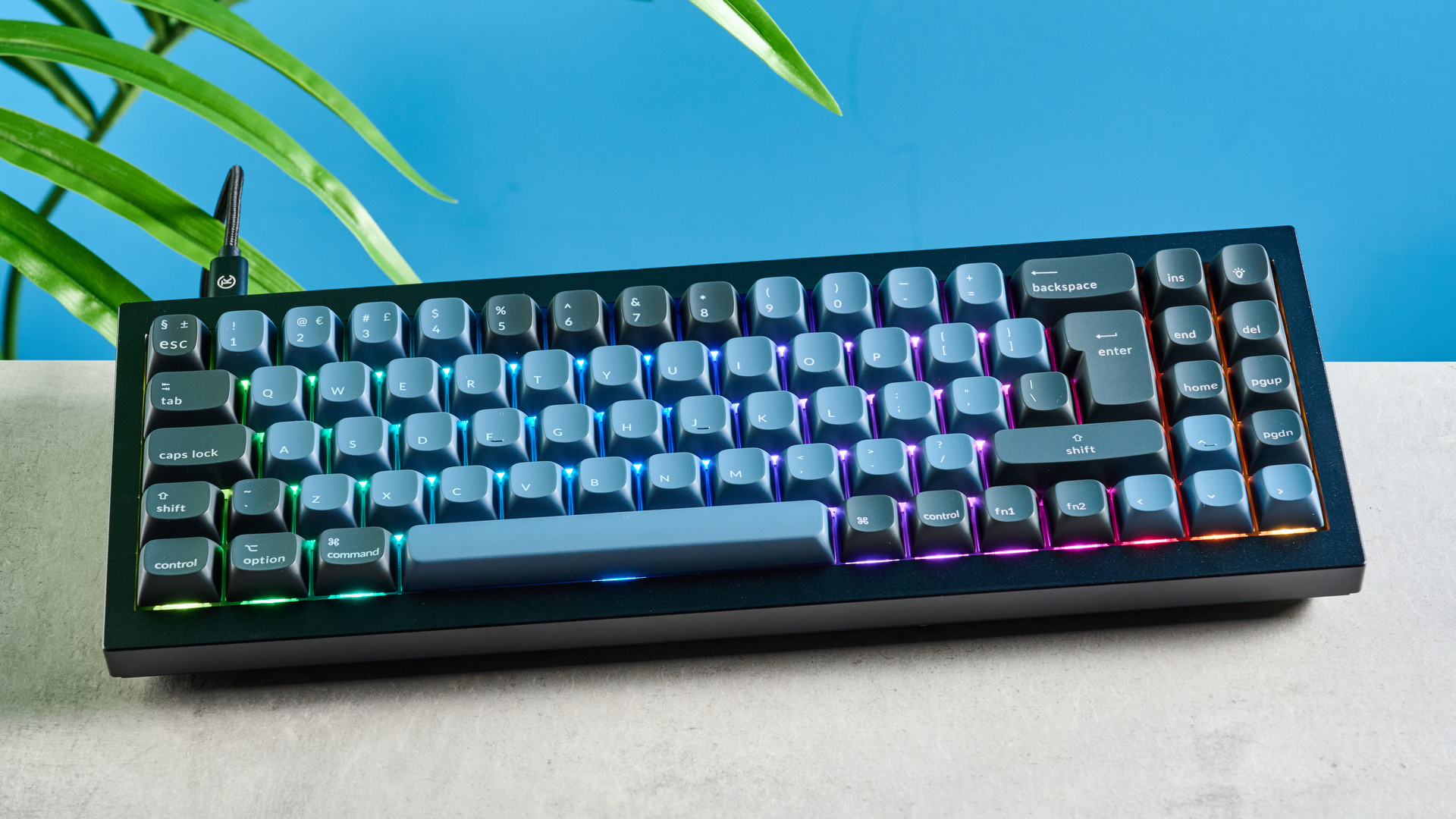
Specifications
Reasons to buy
Reasons to avoid
The Keychron Q7 is an extremely sturdy mechanical keyboard thanks to its metallic body made of full CNC machined aluminum. It's quite heavy, weighing 4 pounds, so it’s meant to stay in place on your desk. Its prowess lies in the typing experience and gaming performance it offers. With a 1,000Hz polling rate and 70% compact layout, it is great for casual gaming in your downtime. The stock Gateron G Pro Red linear switches we tested are highly responsive, negating any possibility of missed inputs, and the 1,000Hz polling rate ensures there aren’t any latency issues.
The Q7 is a superb keyboard for typing. The double-shot PBT keycaps have a unique OSA profile (similar height to the OEM profile and an SA-like shape) that’s comfortable for long periods. The double-gasket design also reduces vibrations and unwelcome metallic pings. Combined with the layers of acoustic foam, the Q7 offers a soft typing feel and a refined and balanced sound profile.
There isn’t much wrong with the Q7 either. The keyboard is on the pricier side of things, but that’s because it’s made entirely of metal, so this isn’t uncommon. Also, it’s wired only and there isn’t a wireless (Max) version available.
Overall, the Q7 is a fantastic keyboard that's well worth the premium, especially for serious typists and casual gamers.
Read our full Keychron Q7 review.
The best split mechanical keyboard
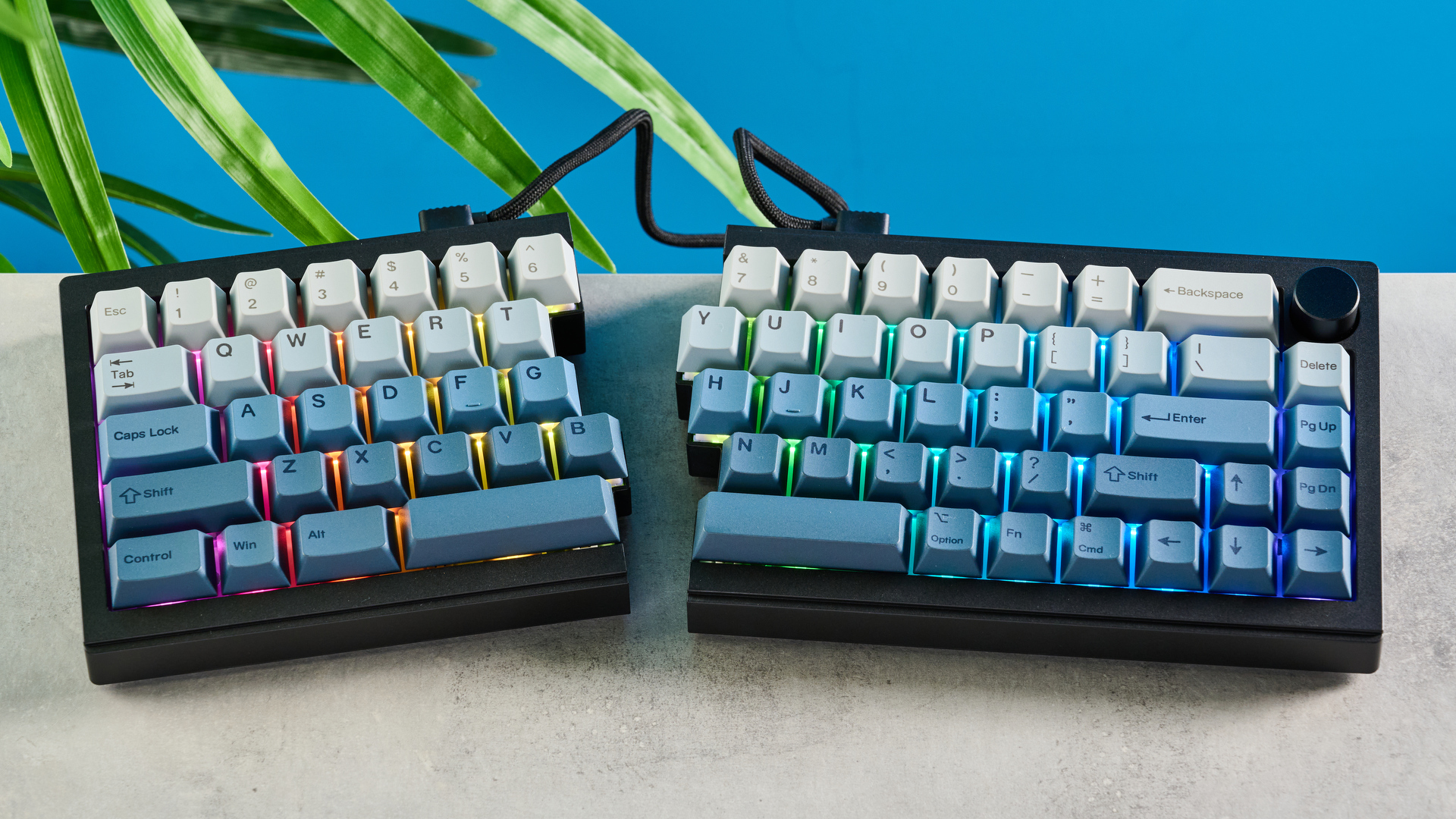
12. Epomaker Split65
Our expert review:
Specifications
Reasons to buy
Reasons to avoid
If you spend all day writing at your desk, you might need an ergonomic keyboard that offers a comfortable typing experience. The Epomaker Split65 can do just that.
As its name implies, this mechanical keyboard is split down the middle. You can place the two modules as far as 13 inches apart, which lets you straighten your posture. Though we found its stock switches to be very responsive for typing and even gaming, the hot-swappable design lets you put in your own switches.
Like other split keyboards, the Epomaker Split65 takes some getting used to if you're used to traditional boards. That said, accepting the admittedly steep learning curve is more than worth it for the ergonomic benefits. Sadly, there are no accompanying ergonomic accessories like a tenting kit. That could be frustrating, considering how rival keyboards provide such peripherals.
While hard to use at first, we highly recommend the Epomaker Split65 for anyone who wants to fix their posture. The fact that this board costs just $119, which is a steal for a split keyboard, is simply icing on the cake.
Read our full Epomaker Split65 review.
The best sounding mechanical keyboard
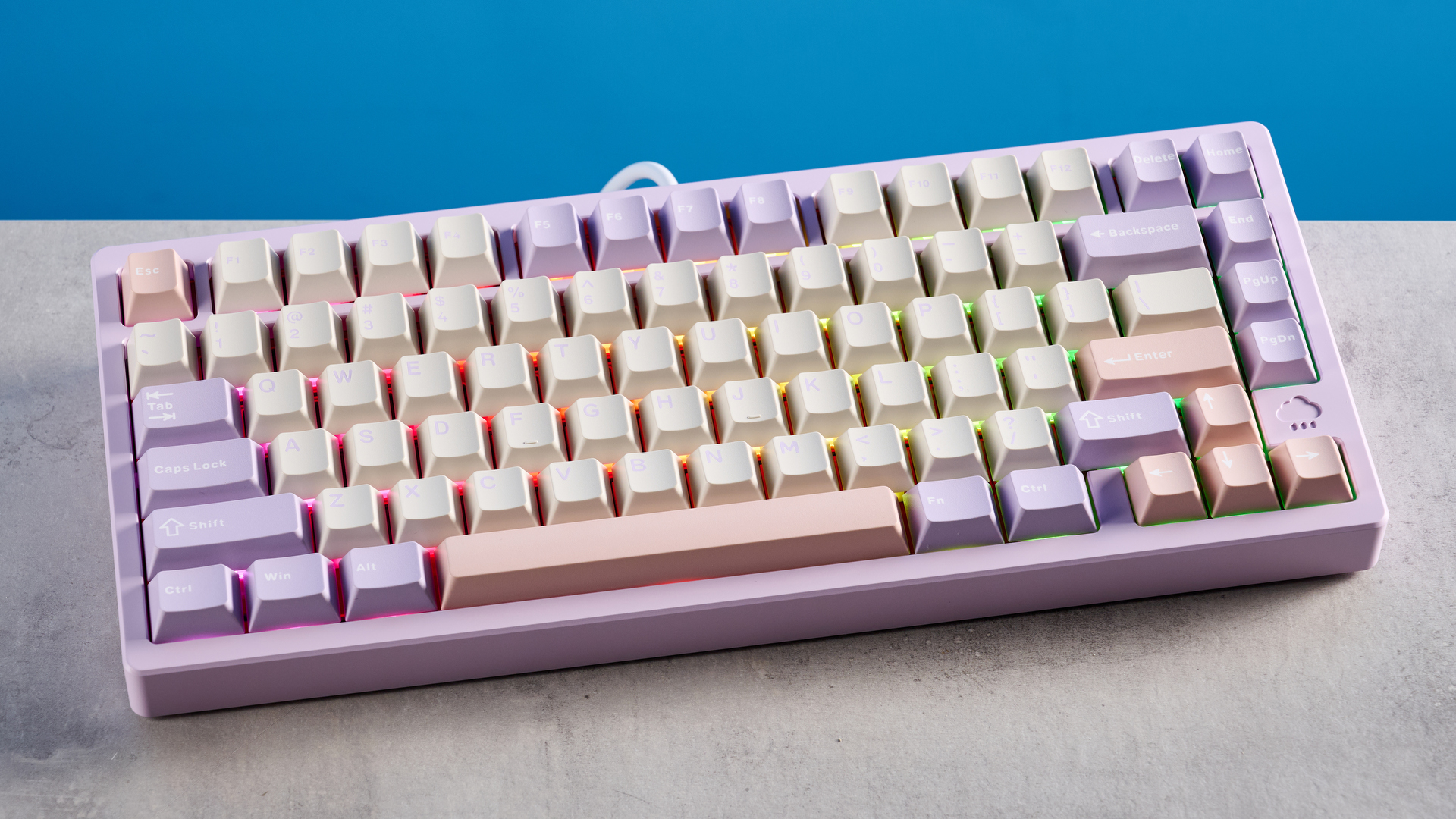
Specifications
Reasons to buy
Reasons to avoid
There’s no better-sounding wireless keyboard than the Wobkey Rainy 75 Pro, period. The brand says this keyboard is designed for audiophiles, and if you’re a serious typist who values both aesthetics and acoustics, this might be your dream keyboard. Its raindrop-like sound profile sets it apart from its competition.
Fitted with smooth Kailh Cocoa linear switches, double-shot PBT keycaps, and a gasket mount design, the Rainy 75 Pro offers an incredibly satisfying “thocky” typing experience. Five layers of sound-dampening foam and a full CNC-machined aluminum body make it durable and sonically rich. We love how fantastic the deck looks as well, with several vibrant color options and per-key RGB lighting.
Beyond the aesthetics, the Rainy 75 Pro is a beast for productivity, featuring macOS and Windows compatibility, hot-swappable switches and it’s accompanied by web-based software for extensive customization. Typing on it is an absolute joy. And the cherry on top? Its massive 7,000mAh battery offers impressive longevity.
With best-in-class acoustics, a premium build, and exceptional typing performance, the Rainy 75 Pro is more than just a pretty face. It’s a heavy-hitting productivity keyboard that sounds as good as it looks.
Read our full Wobkey Rainy 75 Pro review.
How to choose the best mechanical keyboard
Design: What size keyboard do you want? Most of us are used to a full-sized keyboard, which has the separate number pad on the right-hand side. But if you don't care about that number pad and/or want something a bit smaller, consider getting a tenkeyless keyboard, which doesn't have the separate number pad. There are a variety of sizes to choose from based on your needs, usually denoted as percentages of a full keyboard (so a 60% mini keyboard is 60% the size of a full keyboard and typically only includes the main typing keys and the number row, for example).
Switches: What kind of switches do you want on your keyboard? There are lots of options to choose from, but they generally vary in two big ways: how noisy they are, and when they register a keypress. Switches that register a keypress (or actuate) when you press them all the way in are called linear switches, whereas those that actuate when you press them roughly halfway down are called tactile switches. Once you know whether you want quiet vs noisy and linear vs tactile, you'll have narrowed your options down from dozens to a handful.
Our guide to mechanical switches will give you more details on some of the top switches on the market, but if you're not sure, it's a safe bet to get Cherry MX switches on your keyboard as they're some of the best in the business.
Price: A good mechanical keyboard will likely cost you between $100 to $200, depending on which one you want and when you buy it. (Hint: Black Friday and Cyber Monday are great days to find good deals on keyboards.) While that might seem high for a keyboard, remember that you're paying for quality: A $20 to $30 membrane keyboard from Microsoft or Dell will work well enough, but it won't be nearly as comfortable (or last as long) as a high-quality mechanical keyboard. Still, if you're looking for something a little cheaper, you can get a quality mechanical keyboard like the Razer BlackWidow Lite for roughly $70.
How we test mechanical keyboards
To determine the best mechanical keyboard, we run each keyboard we review through a variety of tests. The first, and most important, test is to play through a number of different games, and see how the keyboard holds up. I usually like to try at least one FPS, RTS, RPG and MMO apiece, since these are the genres that benefit most from a good keyboard. (You can generally get away with a controller for most action/adventure titles.)
After that, we take a deep dive into a keyboard's software suite, evaluating how easy (or difficult) it is to reprogram keys, set up macros, adjust lighting and create profiles for games. Particularly intuitive software gets high marks; convoluted software can lose some points, even if it's very robust otherwise.
Finally, we make sure to use a keyboard for productivity and personal gaming for at least two or three days. Most of us don't swap keyboards in and out; what you use for gaming, you'll need to use for work and general computing as well. The better a keyboard is at everyday tasks, the better its recommendation.
For more information, check out our how we test page for Tom's Guide.
Next: How to clean a mechanical keyboard.
Also tested
The Epomaker TH99 is a productivity beast, thanks to its fantastic, responsive Creamy Jade linear switches. The keyboard has a lovely sound profile and design and comes with user-friendly software for customization. Its 96% layout makes it great for the office. However, stock switch choice is limited, and there is some flex in the body.
The Razer BlackWidow Lite ($90) is a tenkeyless mechanical keyboard that aims to split the difference between a gaming accessory and a productivity peripheral. While it bears the hallmark Razer design and functionality, it's eschewed just about anything that would make a gaming keyboard look out of place in an office environment, like RGB lighting or extra rows of macro keys.
The Redragon Blue Siren K654 is a fantastic gaming keyboard, thanks to its 1,000Hz polling rate and responsive switches. It sports a lovely design with different shades of blue, and comes with customizable RGB lighting — and it isn’t very pricey either. However, it has a couple of noteworthy drawbacks.
The retro-looking Epomaker TH80 Pro is hot-swappable for maximum customization, comes with a handy app to personalize the keyboard to your liking, and has been a great typing experience. But you might want to invest in a wrist rest if you type for hours and keep the manual on hand to remind yourself of secondary functions.
The Gamakay TK75 Pro is a lovely keyboard to type on thanks to the pre-lubed KTT Hyacinth linear switches and five layers of acoustic foam. With an all-aluminum construction, it’s very sturdy, and it’s hot-swappable too. It’s also an aesthetically pleasing board to look at. But OS detection works over a wired connection only, and the software is finicky.
The Epomaker DynaTab75 boasts gorgeous looks and excellent construction. Better yet, it has a slot for your tablet! Typing on this keyboard is delightful, as is playing FPS and RPGs as the keys provide great tactile feedback and register presses accurately. Its user-friendly software makes it easy to customize the keyboard, making this hot-swappable board great value for money.
The Royal Kludge S98 is hot-swappable and comes with a customizable screen, so there’s a lot of potential there. It also offers a brilliant typing experience and decent gaming performance, and its gorgeous design is just the cherry on top of the cake. But its companion software isn’t macOS compatible, the screen is a little dim, and you could get more value for money elsewhere.
The Gamakay LK75 feels like a dream for a typist and gamer like me. It’s beautifully designed with a space theme, and it’s built well. It’s also hot-swappable, comes with a smart knob that can display any image or GIF you like, and its in-depth companion software lets you truly make this keyboard your own. There are a couple of minor flaws, though, which are quickly remedied by everything else it does right.
TKLs don’t get much better than this for less than $100. The V3 is easily one of the best-feeling keyboards and is no slouch when it comes to gaming either. It has a wealth of customization and compatibility options. Any minor problems don’t overly detract from the otherwise sublime construction quality, lending to an exceptional typing experience.
The Keychron K13 Max is an excellent low-profile keyboard that can be customized from the get-go and further personalized with web-based software. The low-profile switches and keycaps make for a comfortable and ergonomic typing experience. However, the number pad takes a while to get used to, battery life is underwhelming, and the feet aren’t sturdy enough.
With its ‘70s sci-fi styling, the Lofree Block looks like it’s come straight from the Nostromo in “Alien”. Offering charming retro looks and sound, plus a comfortable typing experience for long stints of productivity. It isn’t perfect, with subpar battery life and no software for customization, and you can get better value for money elsewhere, but overall this is an incredibly easy board to recommend.
The Keychron Q14 Max’s Alice layout makes it a solid piece of machinery — one that every writer will benefit from. This ergonomic keyboard relieves strain on your wrists while offering a superb typing experience. It’s also QMK-enabled and comes with glorious RGB lighting. And you can get an ambidextrous version too. However, it’s very heavy and expensive.
A gorgeous keyboard, either in the retro or stealth fighter styles available. Encased entirely in metal and acoustically damped to oblivion, the Q3 Max sounds epic and won’t give you any headaches in the build quality department. 1,000Hz polling also makes it a suitable gaming board if you so desire. Unfortunately, it’s expensive, heavy, and the lack of height adjustability might have you considering other options.
The K10 Max is a fantastic iteration of the tried-and-true Keychron formula, offering additional sound dampening, a new mounting system, and Keychron’s high-performance “Super Switches.” A deeper, thicker sound than ever before and responsive keystrokes make this a great gaming option, too.
The Epomaker EK68 is a fantastic mechanical keyboard that’s fully hot-swappable. It’s lovely to type and game on, thanks to the responsive switches and double-shot PBT keycaps and comes with an intuitive companion software for customization — all for $89. However, its construction feels flimsy with its bendy PCB and twisting body.
Get instant access to breaking news, the hottest reviews, great deals and helpful tips.

Tony is a computing writer at Tom’s Guide covering laptops, tablets, Windows, and iOS. During his off-hours, Tony enjoys reading comic books, playing video games, reading speculative fiction novels, and spending too much time on X/Twitter. His non-nerdy pursuits involve attending Hard Rock/Heavy Metal concerts and going to NYC bars with friends and colleagues. His work has appeared in publications such as Laptop Mag, PC Mag, and various independent gaming sites.
- Alex WawroSenior Editor Computing

